Explore the rich world of Indian spices and herbs with our detailed guide. Learn about the flavors, aromas, and culinary uses of these essential ingredients that elevate the taste of Indian dishes.
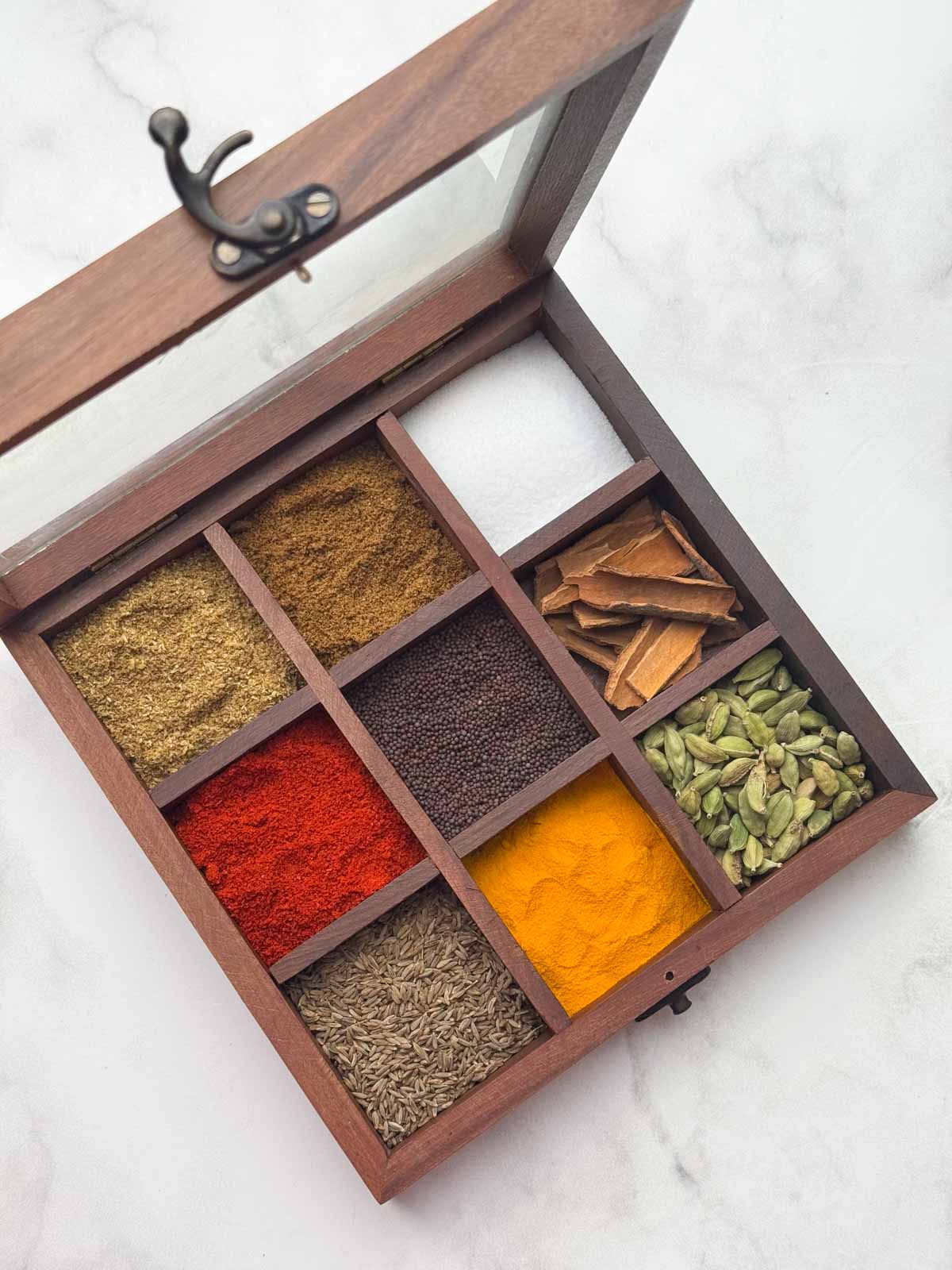
Indian food is renowned for its creative use of herbs and spices. The main ingredient in any Indian cuisine is spice or herbs, which is the essence of Indian food preparation.
Despite being regional in nature, several spices remain a staple in practically every Indian home. Furthermore, Indian spices are unique among all other spices in the globe because of their abundance of health advantages. These Indian spices and herbs are known worldwide. To make you all understand them better, we have made a list of all the Indian spices that are used in Indian cooking. So, let’s get started.
Jump to:
History of Indian Spices
There are three distinct stages in the history of Indian spices: the early, middle, and early modern periods.
- Early period
The first known account of Indian spices can be found in the "Rig Ved," which dates to approximately 6000 BC. One significant category of agricultural commodities is spices. They are essentially farm products that are used in meals in a variety of ways—fresh, ripe, dried, broken, powdered, etc.—and add flavor, color, and aroma.
- Middle Period
During the Late Middle Ages, Western Europe imported common spices every year. Throughout the Middle Ages, one of the most expensive and in-demand goods in Europe was spices. Pepper, cinnamon, cumin, nutmeg, ginger, and cloves are a few common spices. Saffron was the most exclusive.
- Early Modern Period
The 19th century saw the continuation of the commercialization of the spice trade, despite America's late entry into the market with its innovative seasonings. Spices are widely employed in medication, cosmetic, and religious rituals, as well as as appetizers and preservatives. Many of them also have rich therapeutic characteristics.
Indian Spice Box
A Masala Dabba is a popular box found in Indian homes, usually made of wood or stainless steel, that carries six or seven vital spices. Not only do the contents of the spice box vary from place to place, but also from family to family. My Indian box consists of red chili powder, turmeric powder, mustard seeds, cumin, ground coriander powder, roasted cumin powder, and garam masala.
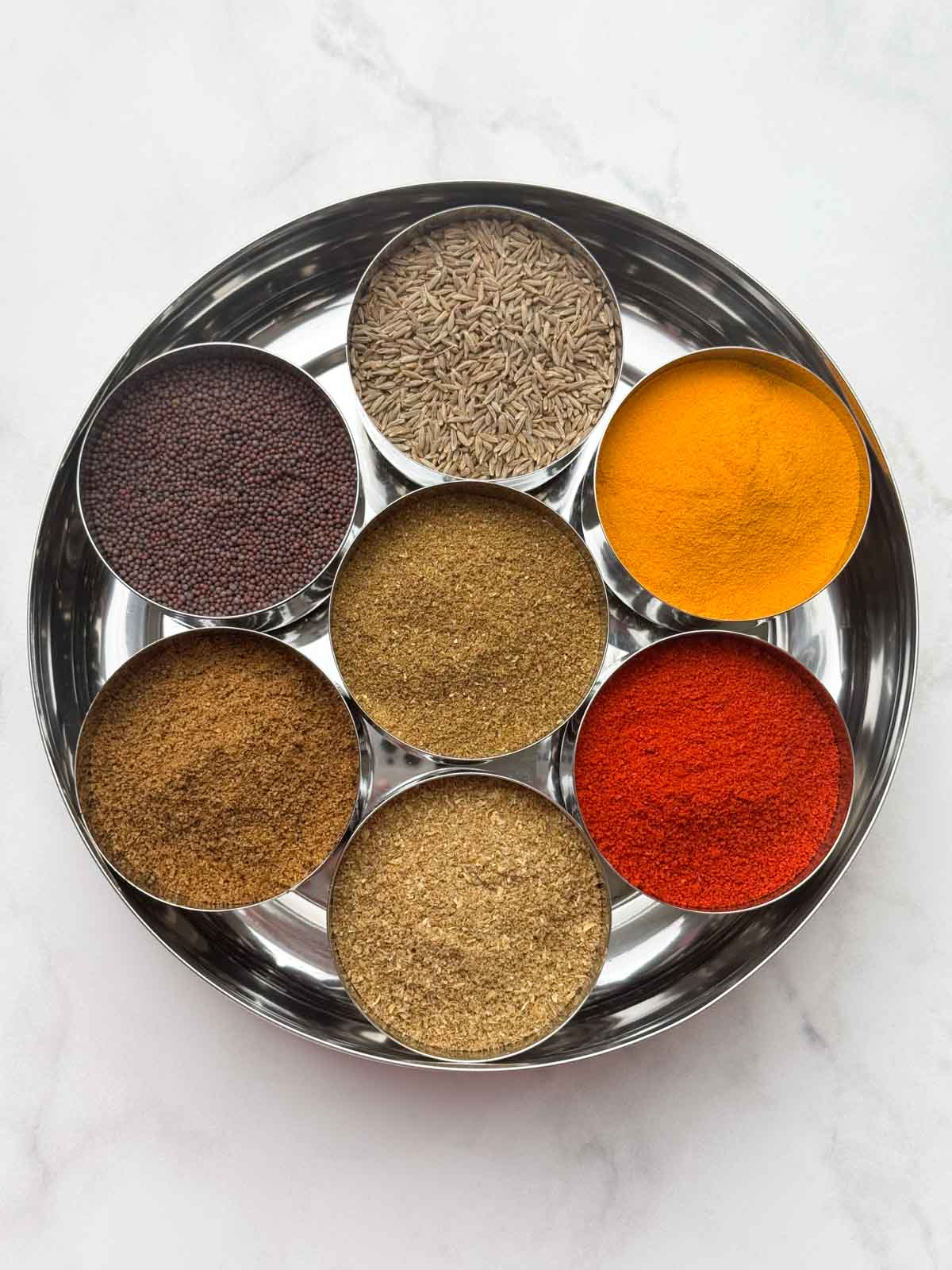
Benefits of Indian spices
Indian spices and herbs are not only flavorful but also have several health benefits.
- Cur-cumin, an anti-inflammatory compound found in turmeric, is frequently used in curries.
- Ginger can facilitate digestion, and cinnamon may help control blood sugar levels.
- cloves have antimicrobial properties.
- It's well known that cumin seeds improve digestion and may aid in weight loss.
- Piperine, which is found in peppercorns, helps improve the absorption of nutrients.
- Coriander seeds are said to have antimicrobial and anti-inflammatory properties.
These spices have several health advantages in addition to giving your food delicious flavors. It's incredible how they may improve well-being and flavor!
Whole Spices
Whole spices are the dried plant parts—barks, roots, seeds, leaves, or stems—ready to unleash enticing fragrances. Indian recipes wouldn't be the same without these spices, as they have a distinct role.
Mustard Seeds (Rai)
The mustard plant produces tiny, rounded seeds that are known as mustard seeds. They have a powerful, aromatic flavor and are frequently used as a spice in Indian cooking.
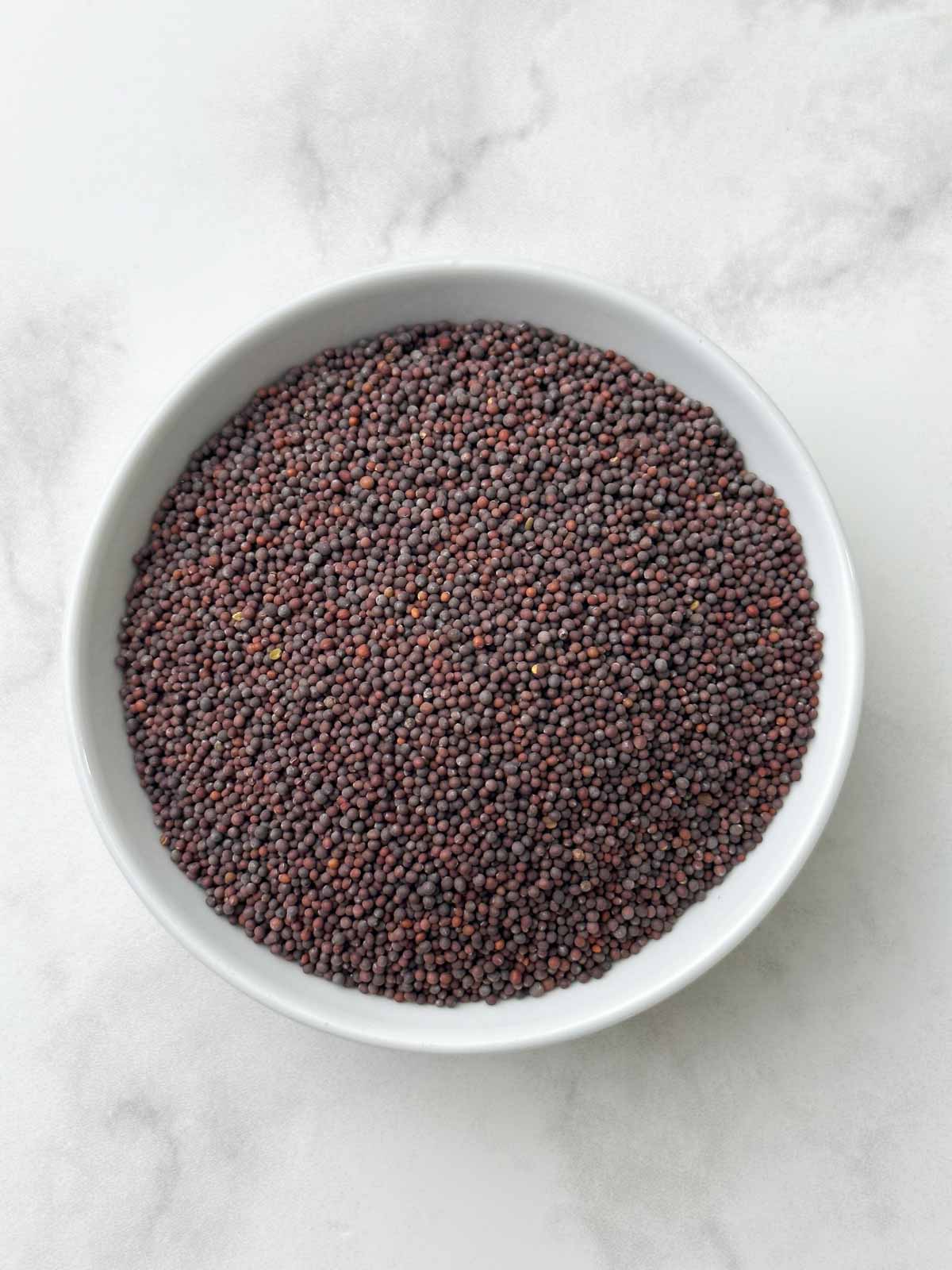
Cumin Seeds (Jeera)
The little, oval-shaped seeds of the cumin plant are known as cumin seeds. They have a warm, earthy flavor with a tinge of citrus and are frequently used in Indian cooking. Tossed or ground cumin seeds are frequently added to curries, stews, and spice combinations.
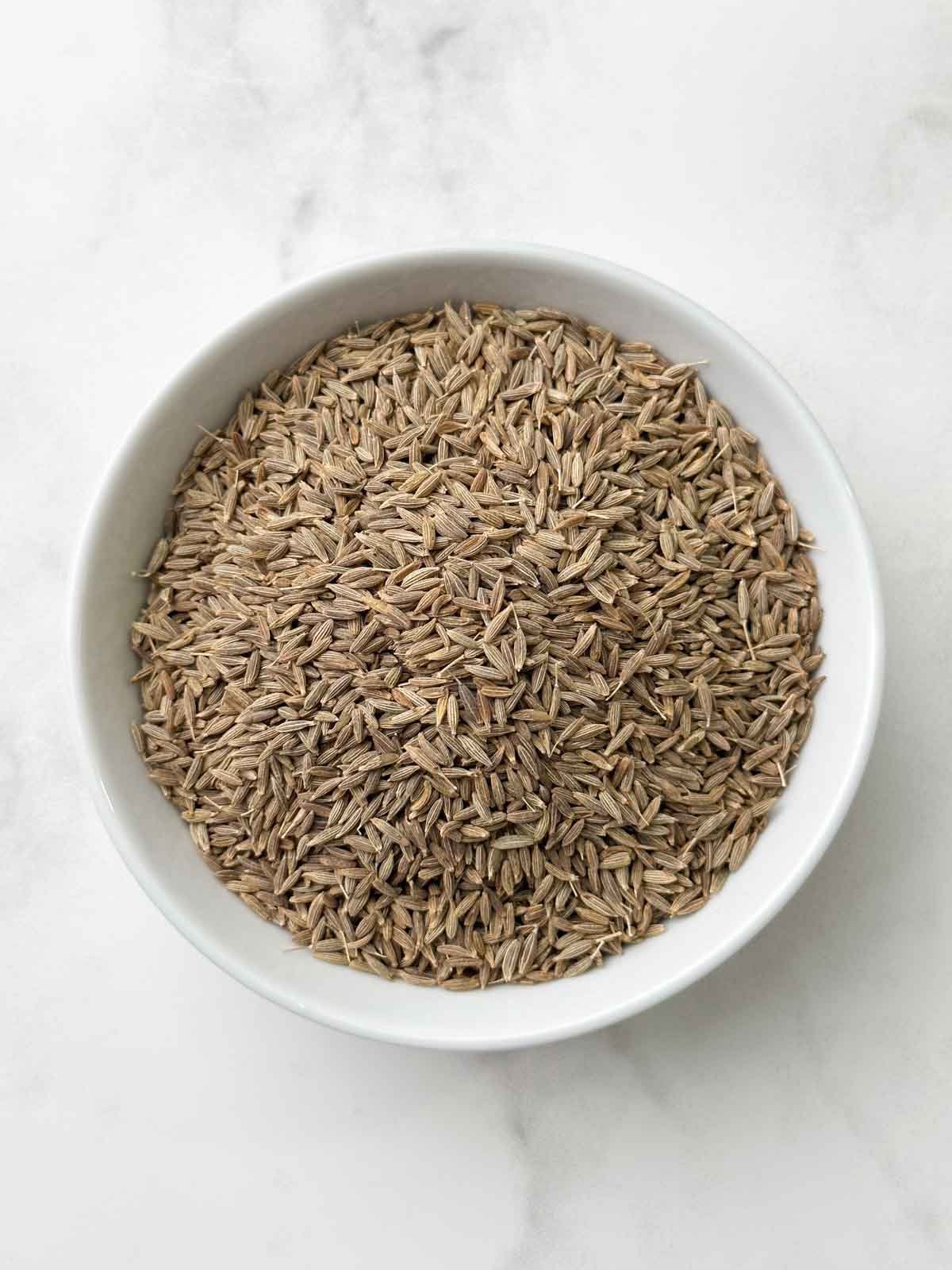
Coriander Seeds (Sabut Dhaniya)
The dried seeds of the coriander plant are called coriander seeds. They are frequently used in Indian cooking and have a pleasant, lemony flavor.
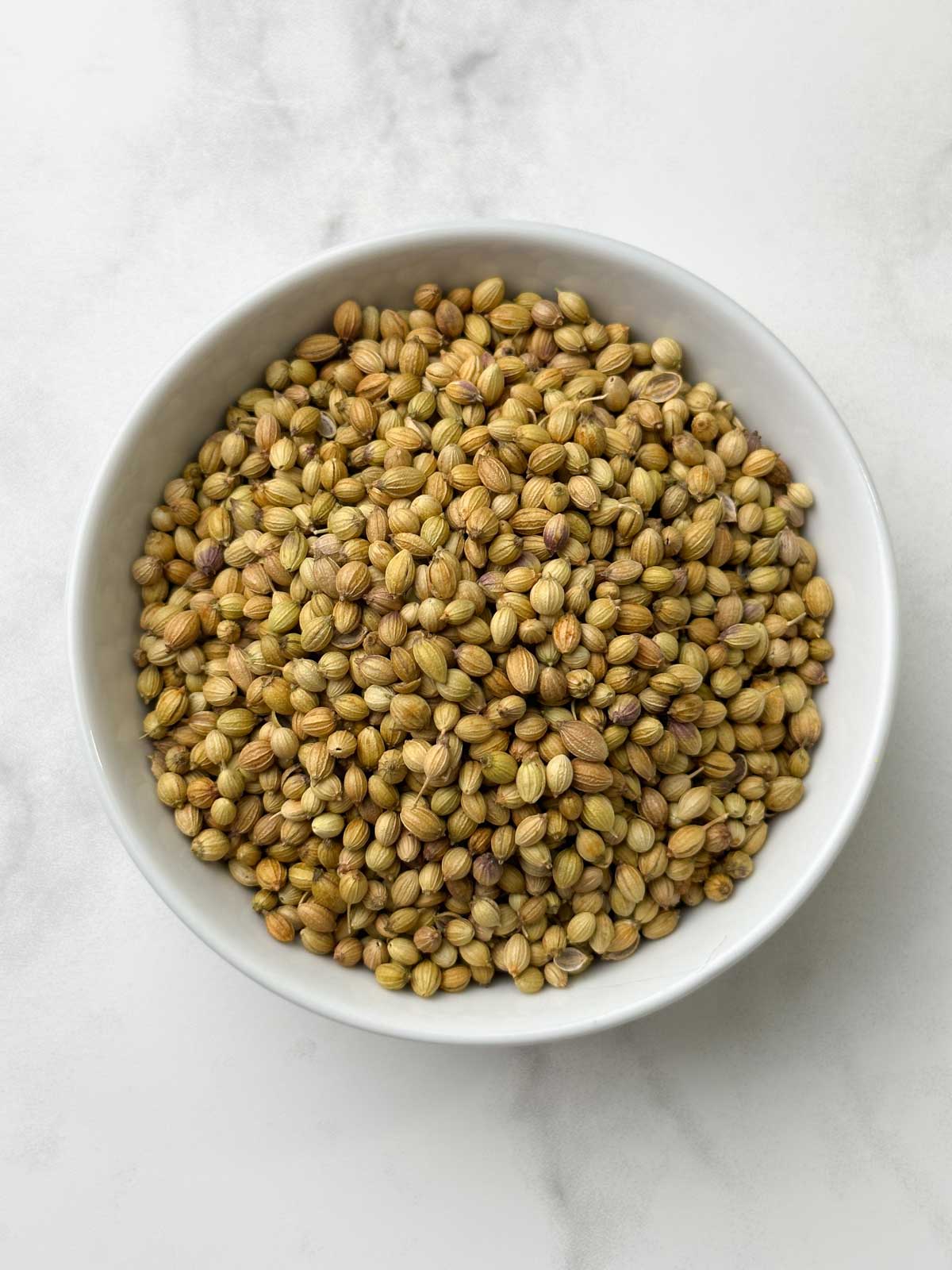
Green Cardamom (Elachi)
Indian cuisine frequently uses green cardamom, particularly in desserts and beverages. Its distinct and aromatic flavor originates from the seeds of the Elettaria cardamomum plant. It is frequently used in recipes for kheer (rice pudding), biryani, and chai tea.
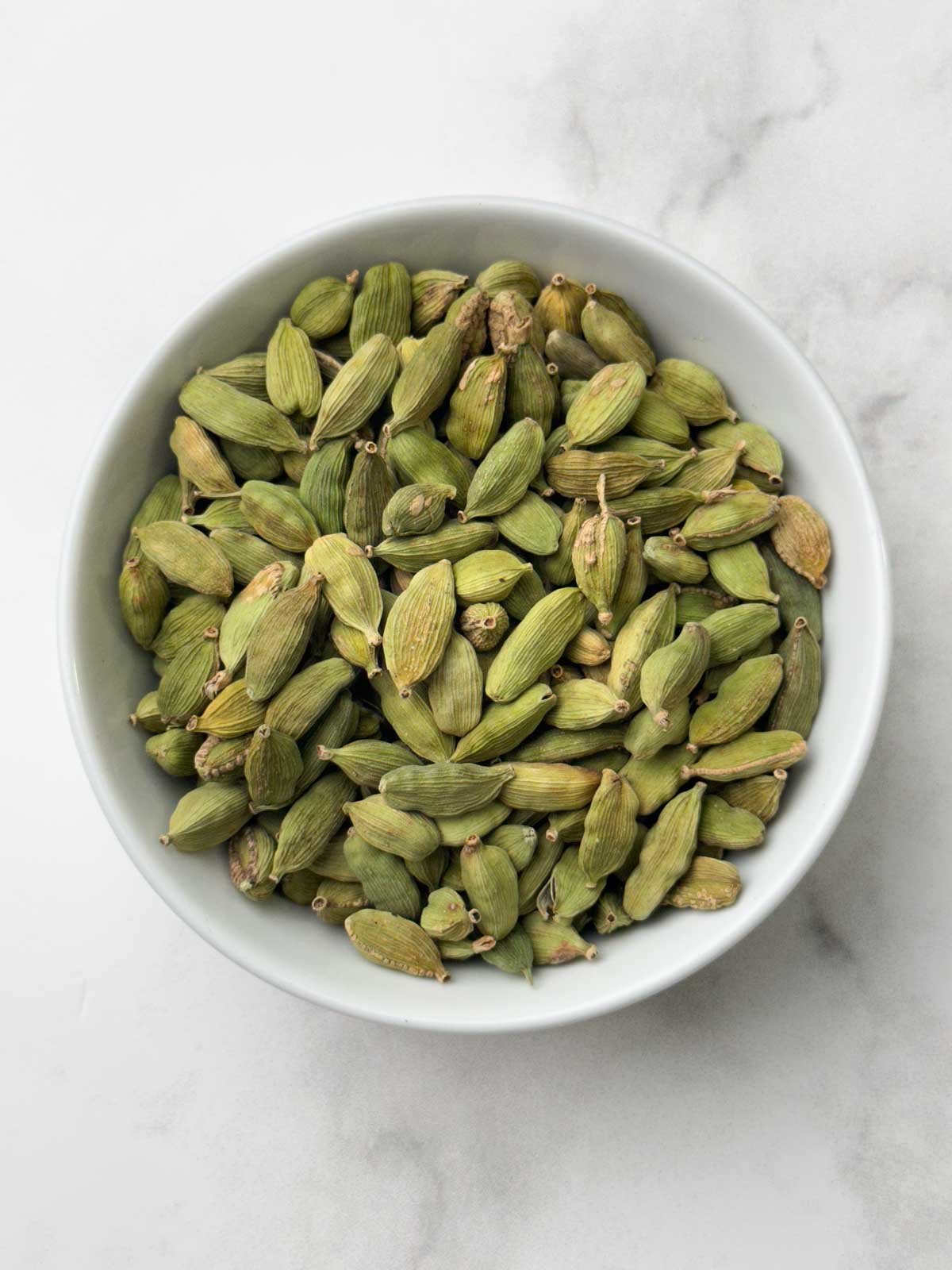
Cloves (Laung)
Cloves have a powerful, aromatic flavor and are the dried flower buds of the Syzygium aromaticum tree.
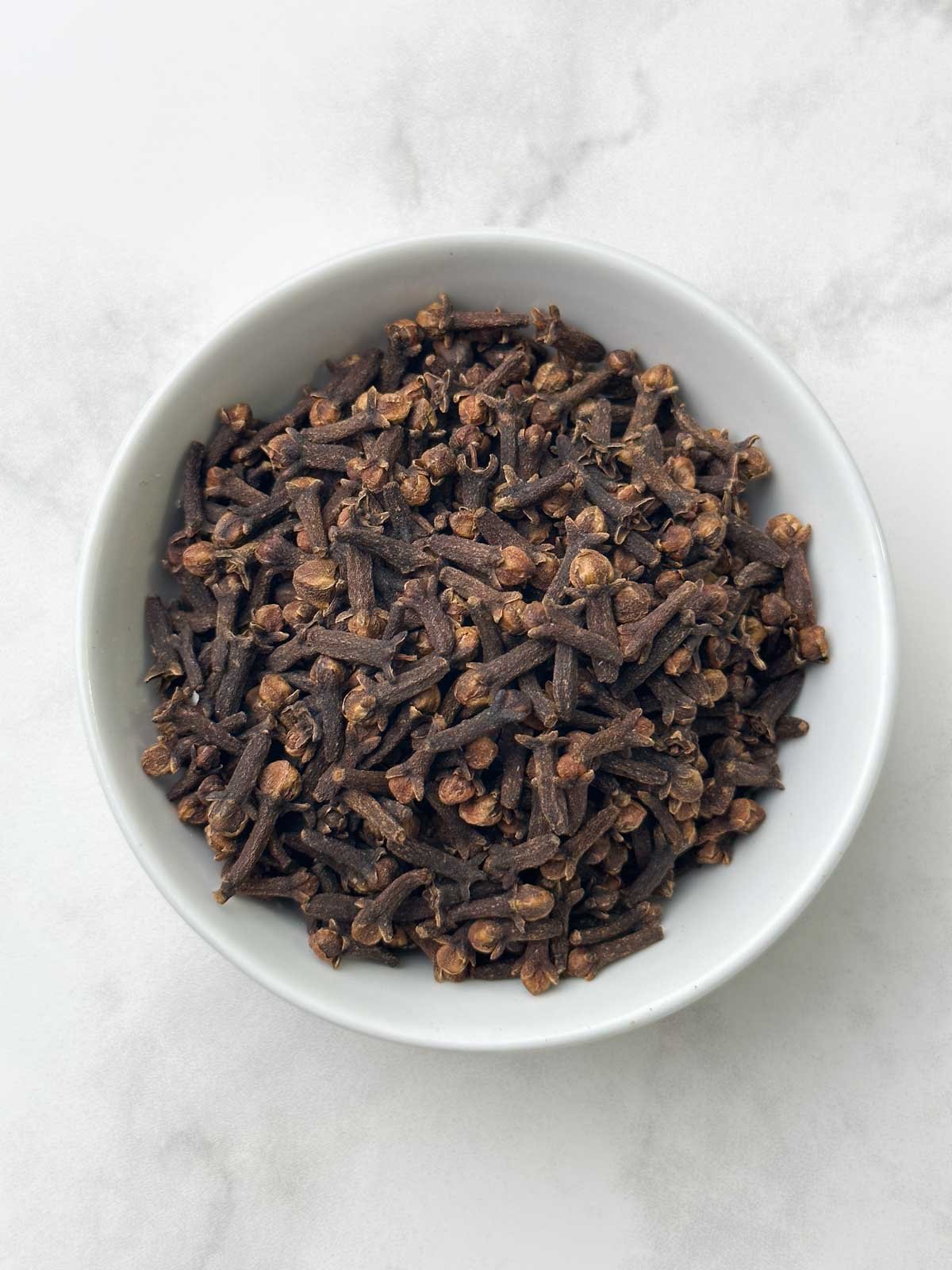
Cinnamon (Dalchini)
The bark of trees belonging to the Cinnamomum family is used to make cinnamon spice. It is frequently used in both savory and sweet dishes because of its warm, sweet flavor.
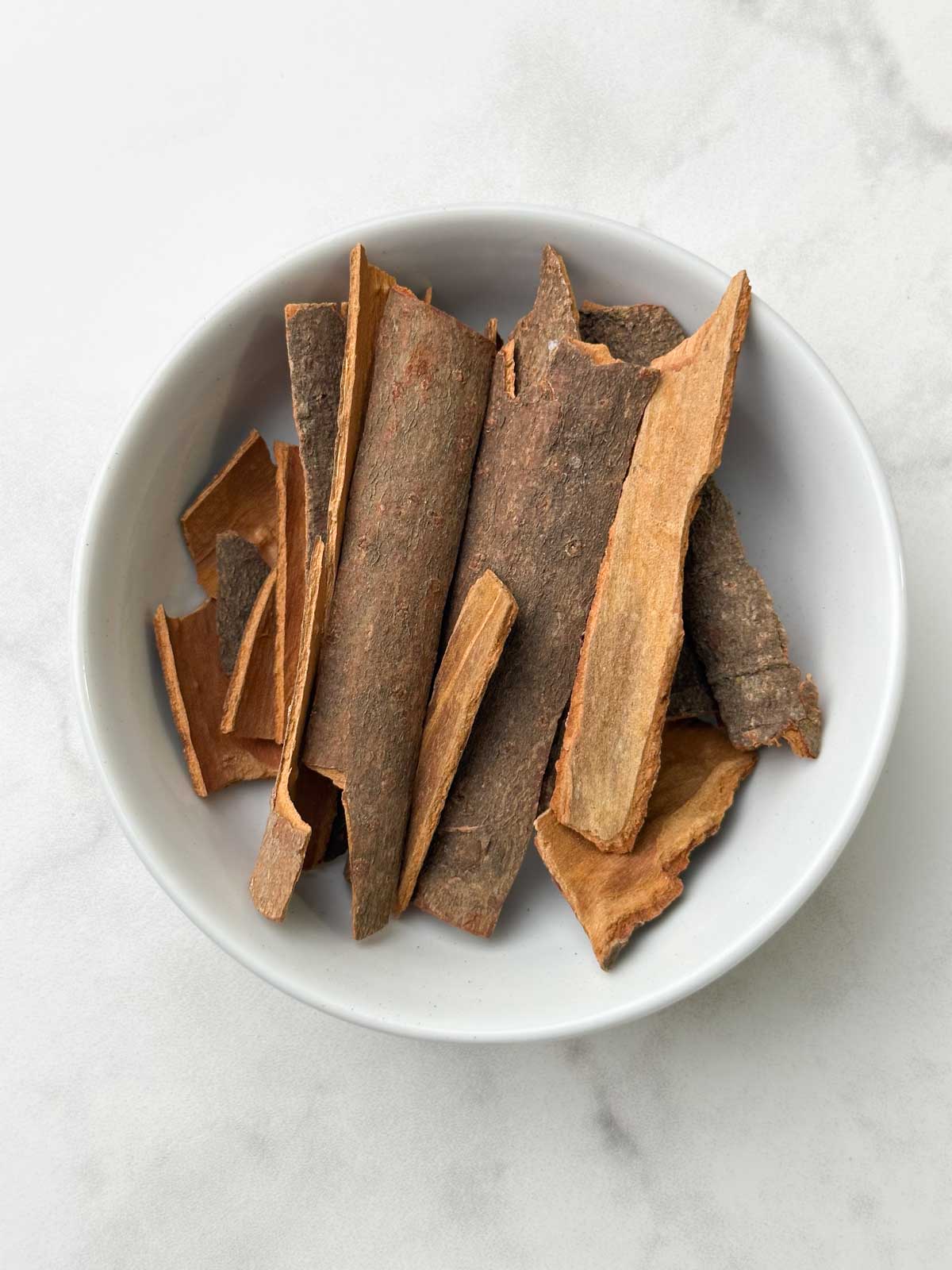
Star Anise
Star anise has a strong, licorice-like flavor and is derived from the fruit of the Illicium verum tree. The name "star anise" comes from the way it looks like a star, with seeds at each point. It is frequently used in curries and biryani, as well as in spice blends like garam masala.
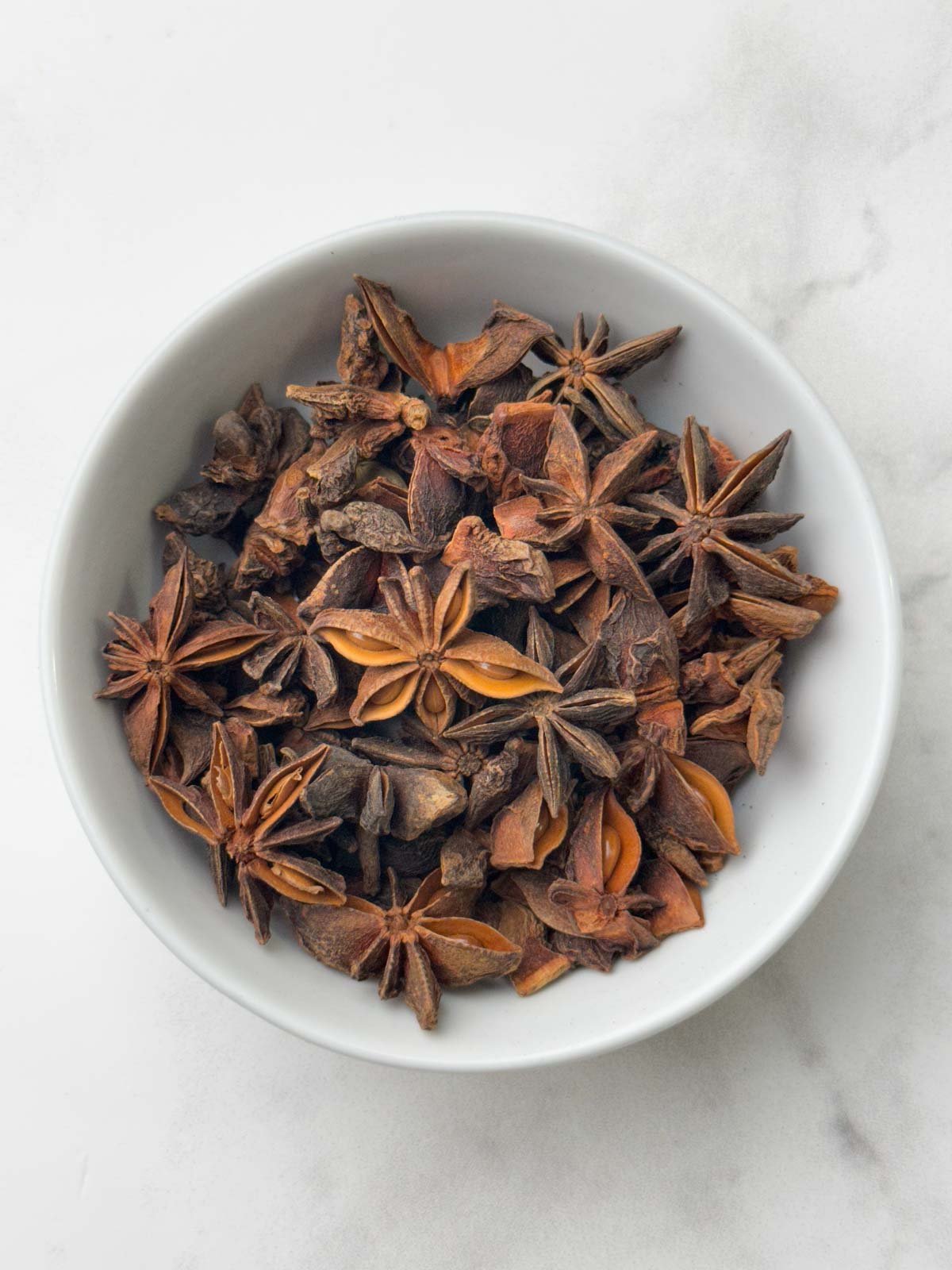
Black Pepper
Black pepper has a strong, somewhat spicy flavor and is derived from the dried berries of the Piper nigrum plant.
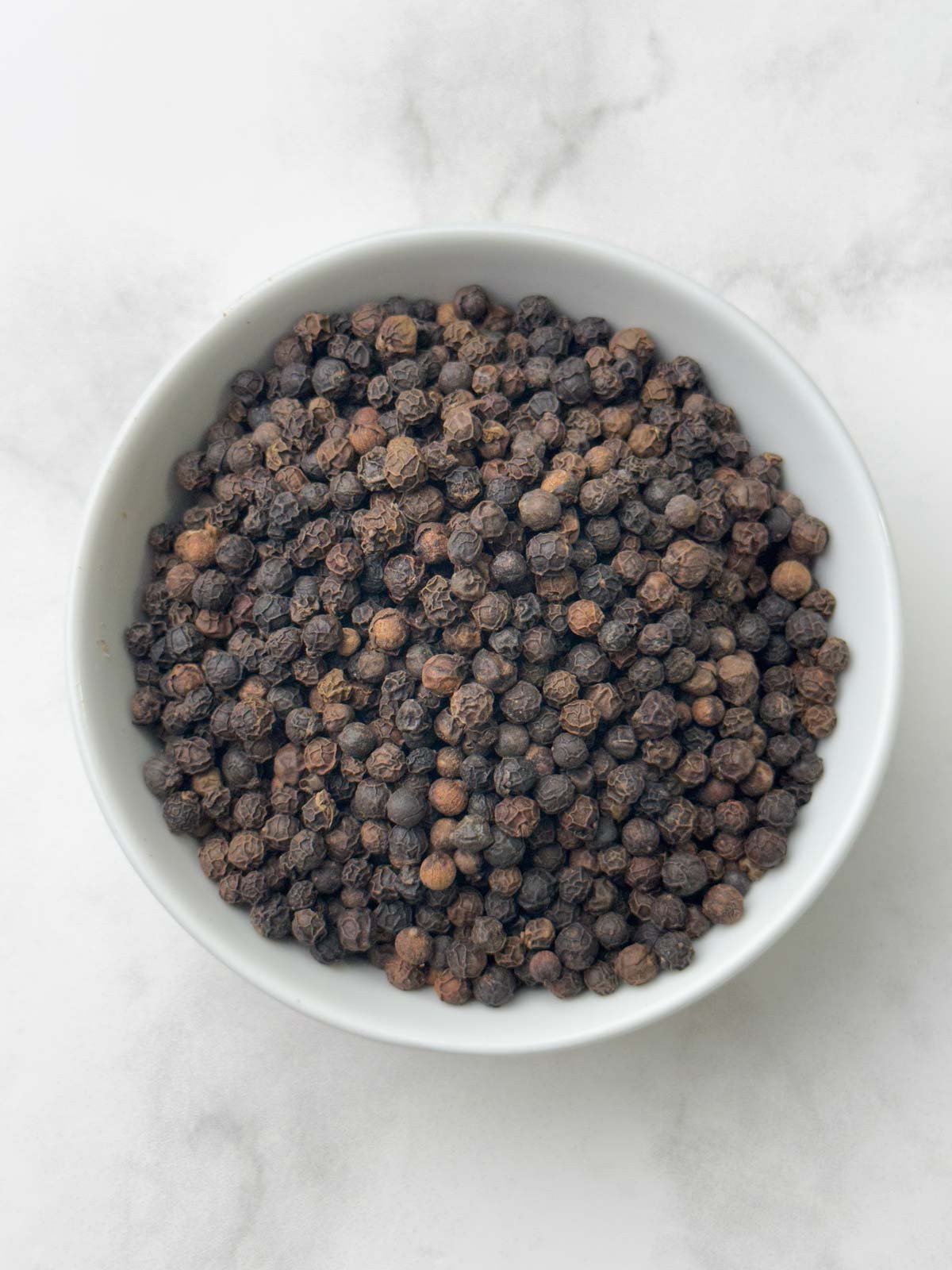
Bay Leaf
Due to its flavor-enhancing and aromatic qualities, bay leaf is a herb that is frequently used in cooking. It tastes quite herbal and is derived from the bay laurel tree. To impart a delicate earthy taste to soups, stews, and sauces, bay leaves are frequently used.
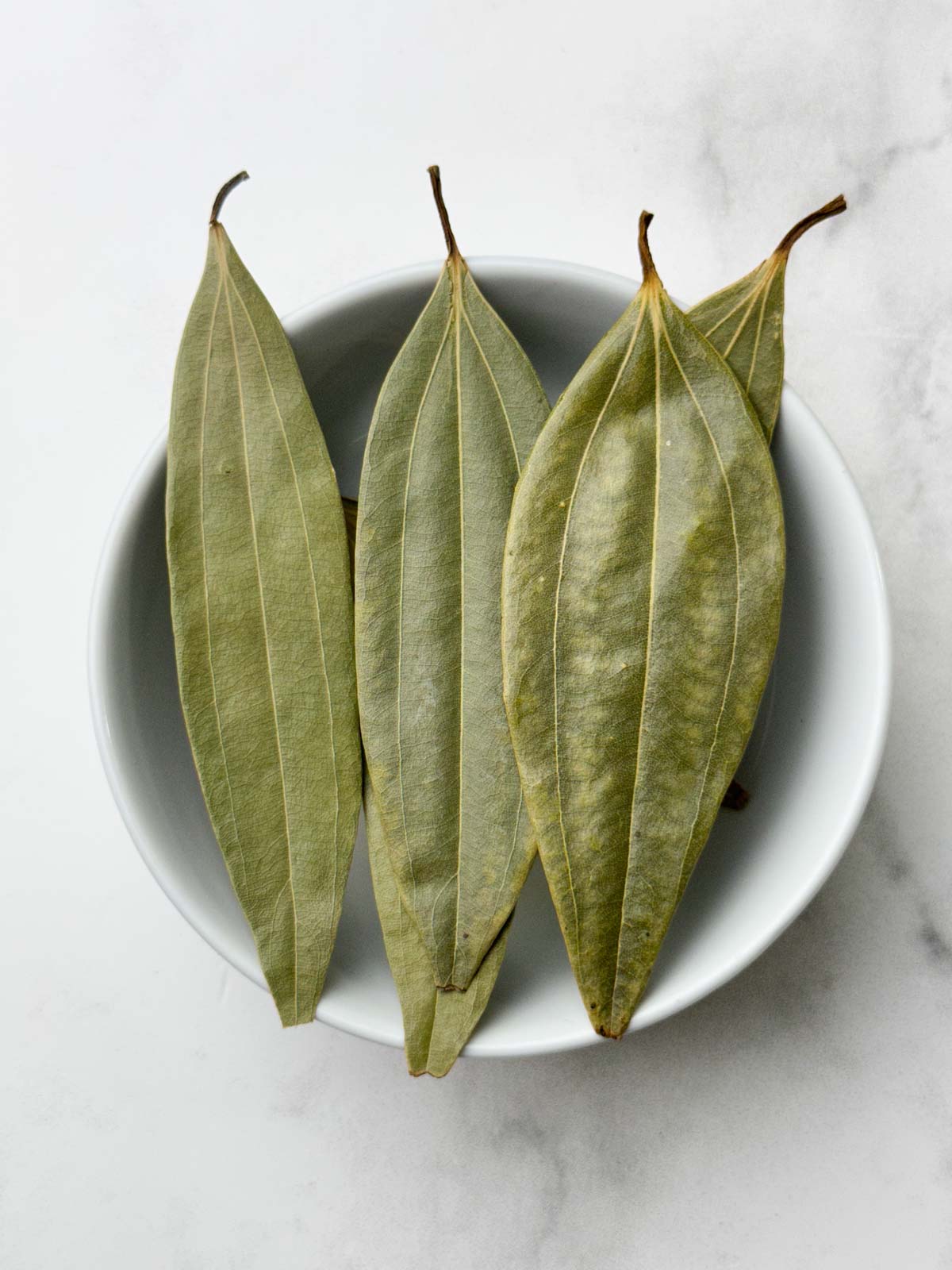
Nutmeg
Nutmeg comes from the seed of the Myristica fragrans tree and has a warm, aromatic flavor. Nutmeg is often used in both sweet and savory dishes, such as curries, desserts, and drinks like chai tea.
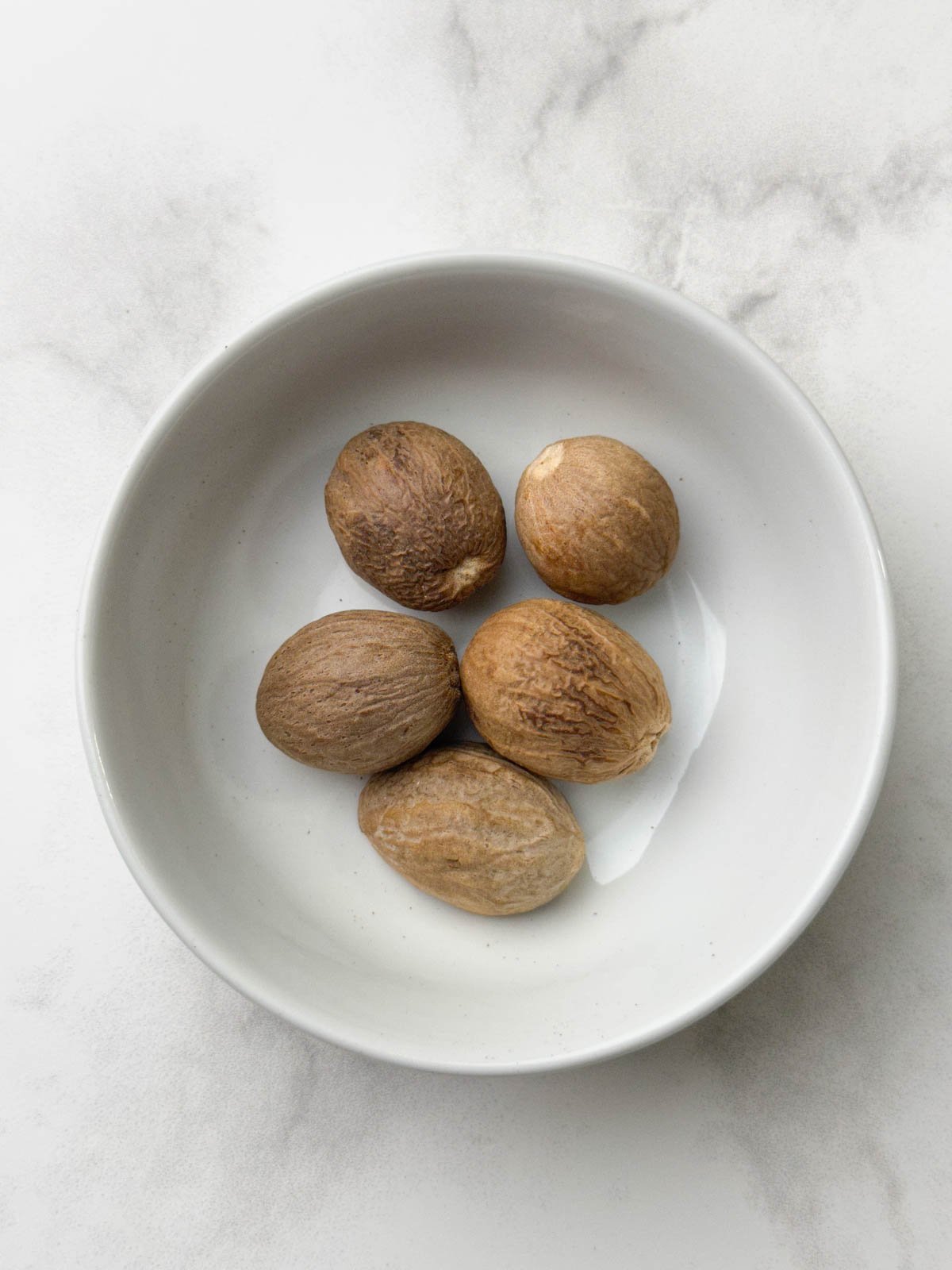
Mace
Mace and nutmeg are closely related spices. In actuality, it is the nutmeg seed's outer layer. Mace is milder and more understated than nutmeg, but it still has a pleasant, fragrant flavor.
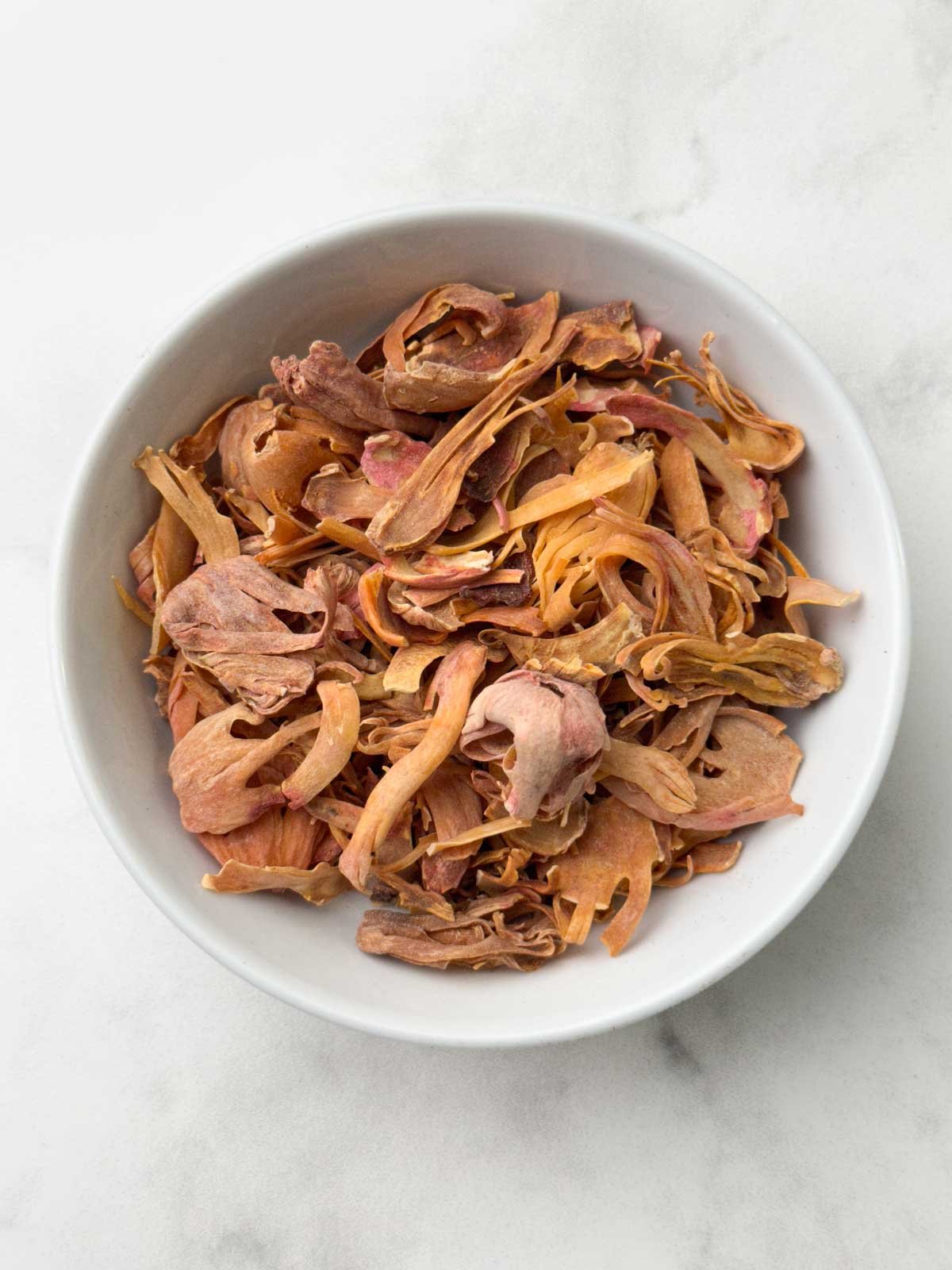
Black Stone Flower
Dagar da Phool, also called Black Stone Flower, Dagarful, Kalpasi, Kallupachi, or Dagar da Phool, is an unusual lichen used in Indian cuisine. Small threads will be seen among the bigger moss fragments. It is commonly used in stews and biryani, although it may also be used in non-vegetarian recipes.
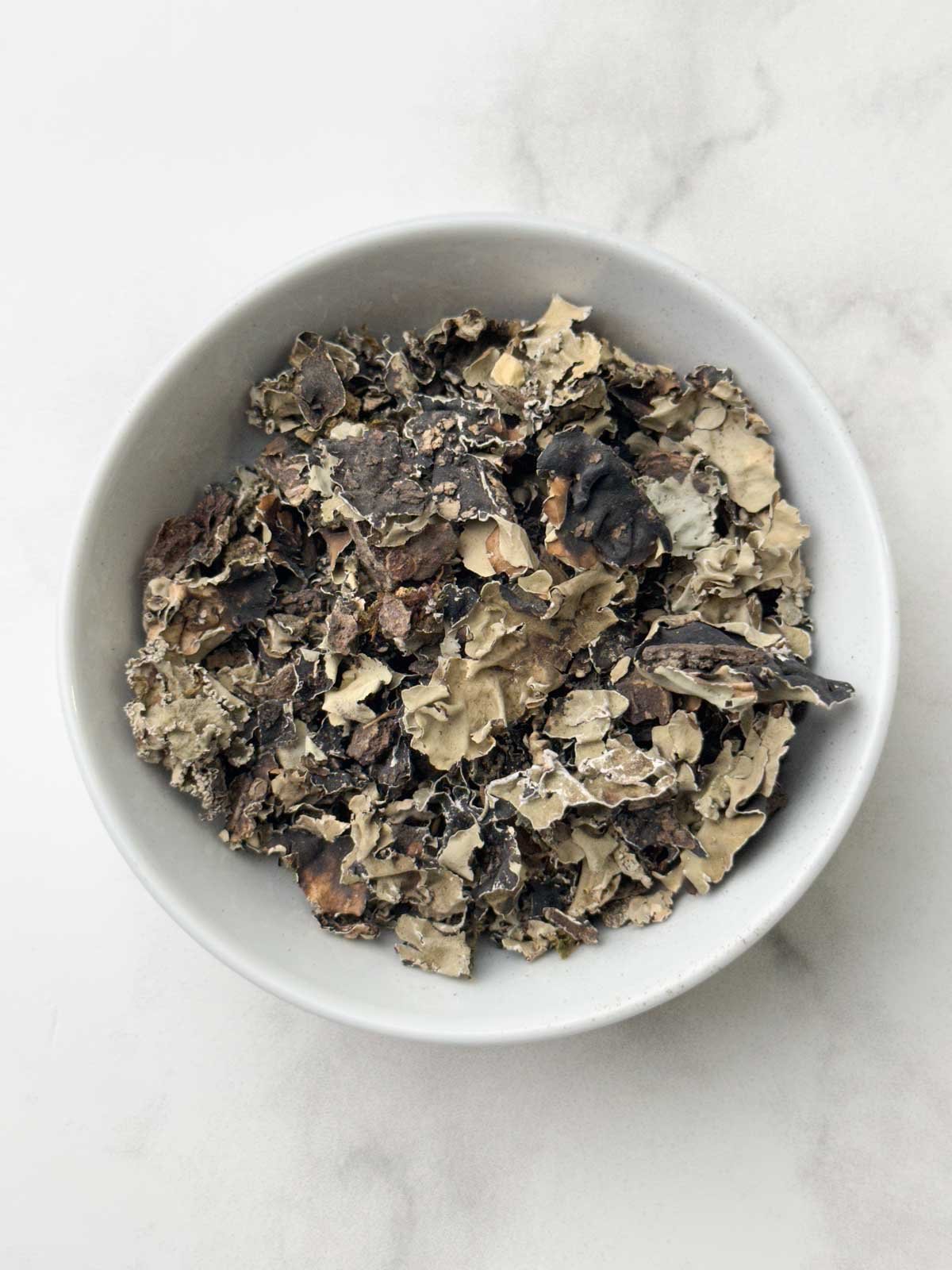
Black Cardamom
Similar to green cardamom, black cardamom is a spice that is frequently used in Indian cooking. Its unique smokey flavor originates from the dried fruit of the Amomum subulatum shrub.
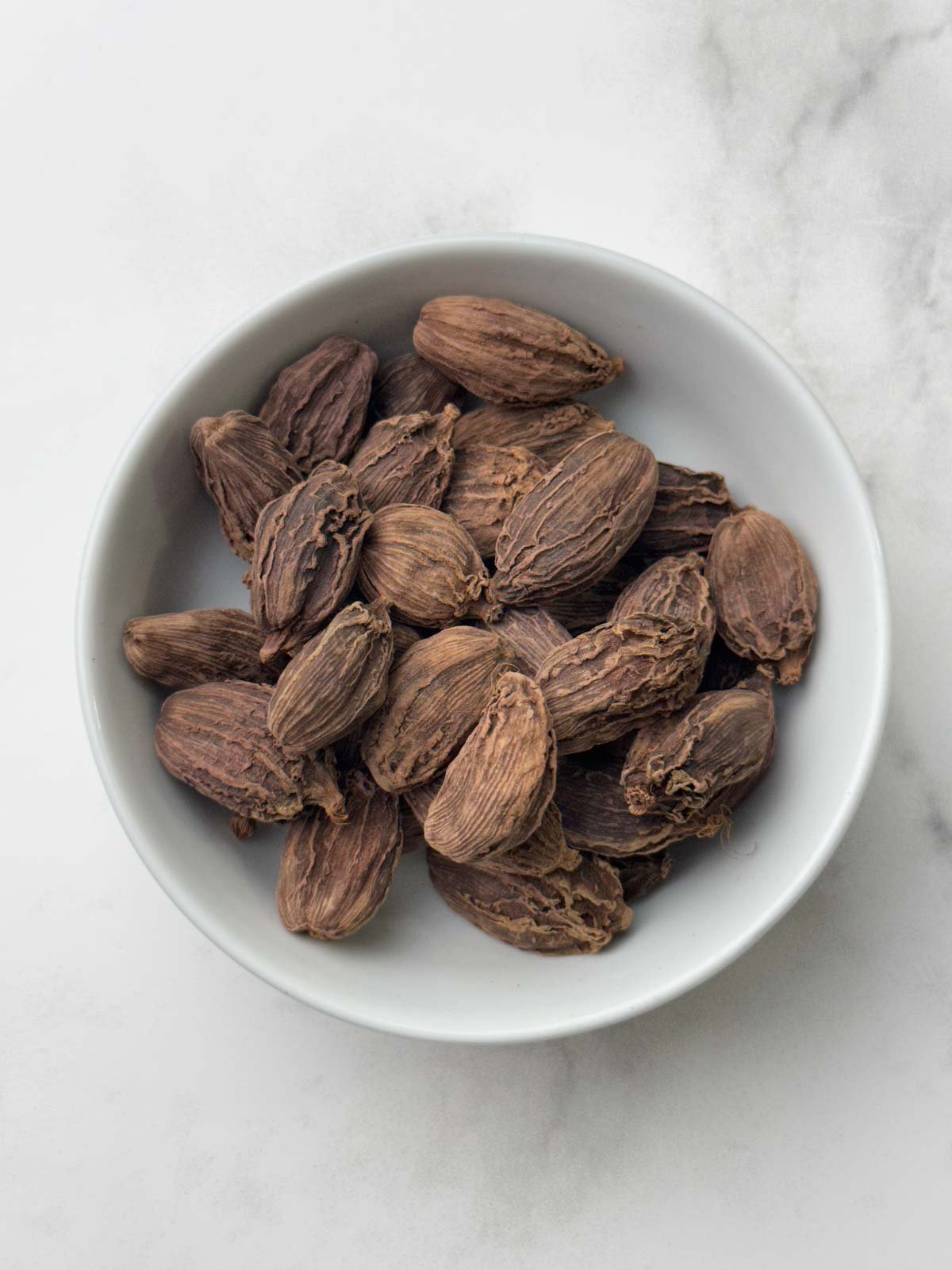
Carrom Seeds (Ajwain)
Ajwain, another name for carrom seeds, are oval-shaped, tiny seeds with a powerful flavor. These seeds are frequently used in curries, breads, and snacks.
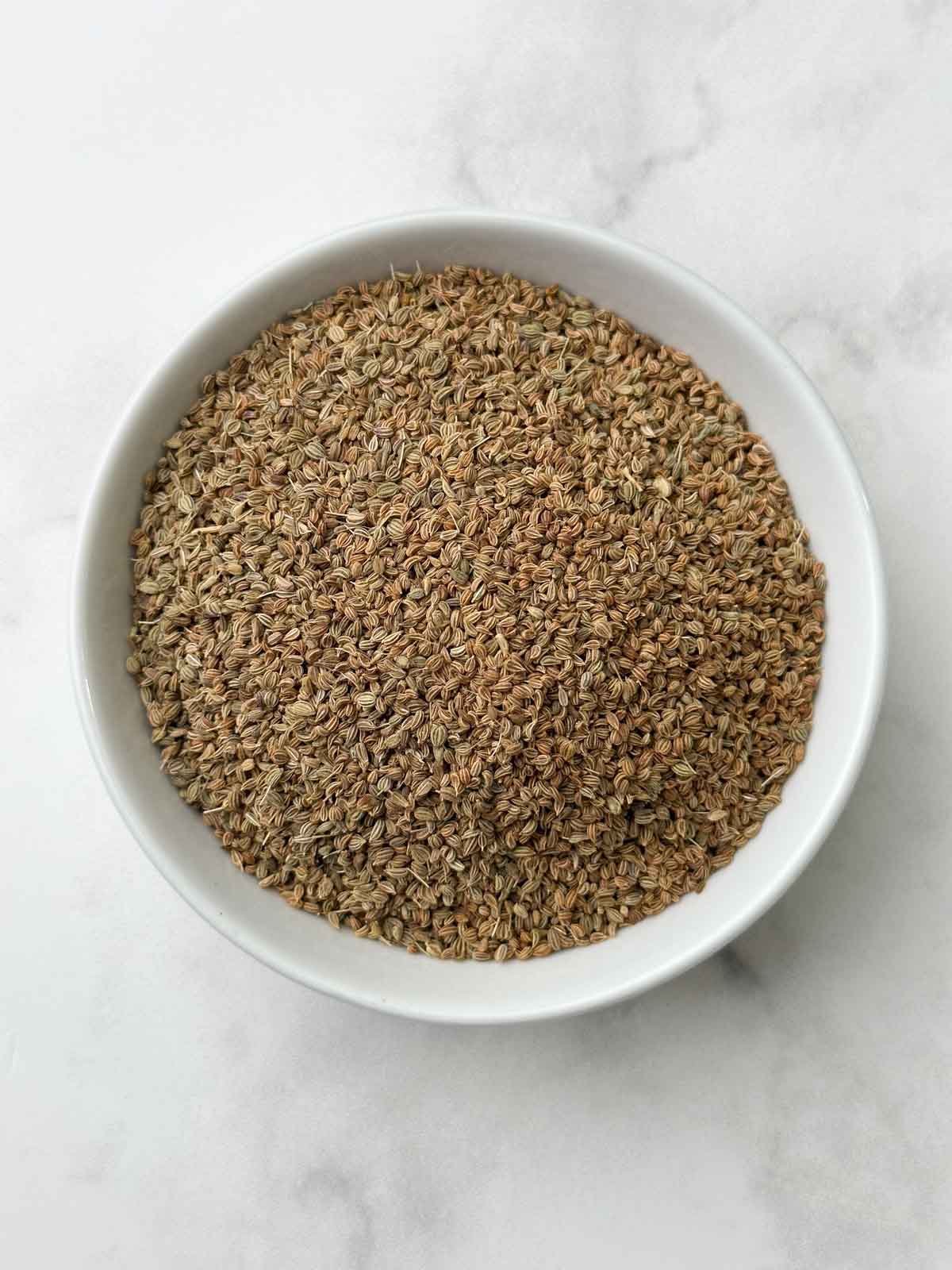
Fennel Seeds (Saunf)
One of the many varieties of the herb fennel plant yields the spice known as fennel seeds. They taste like licorice and are sweet and potent.
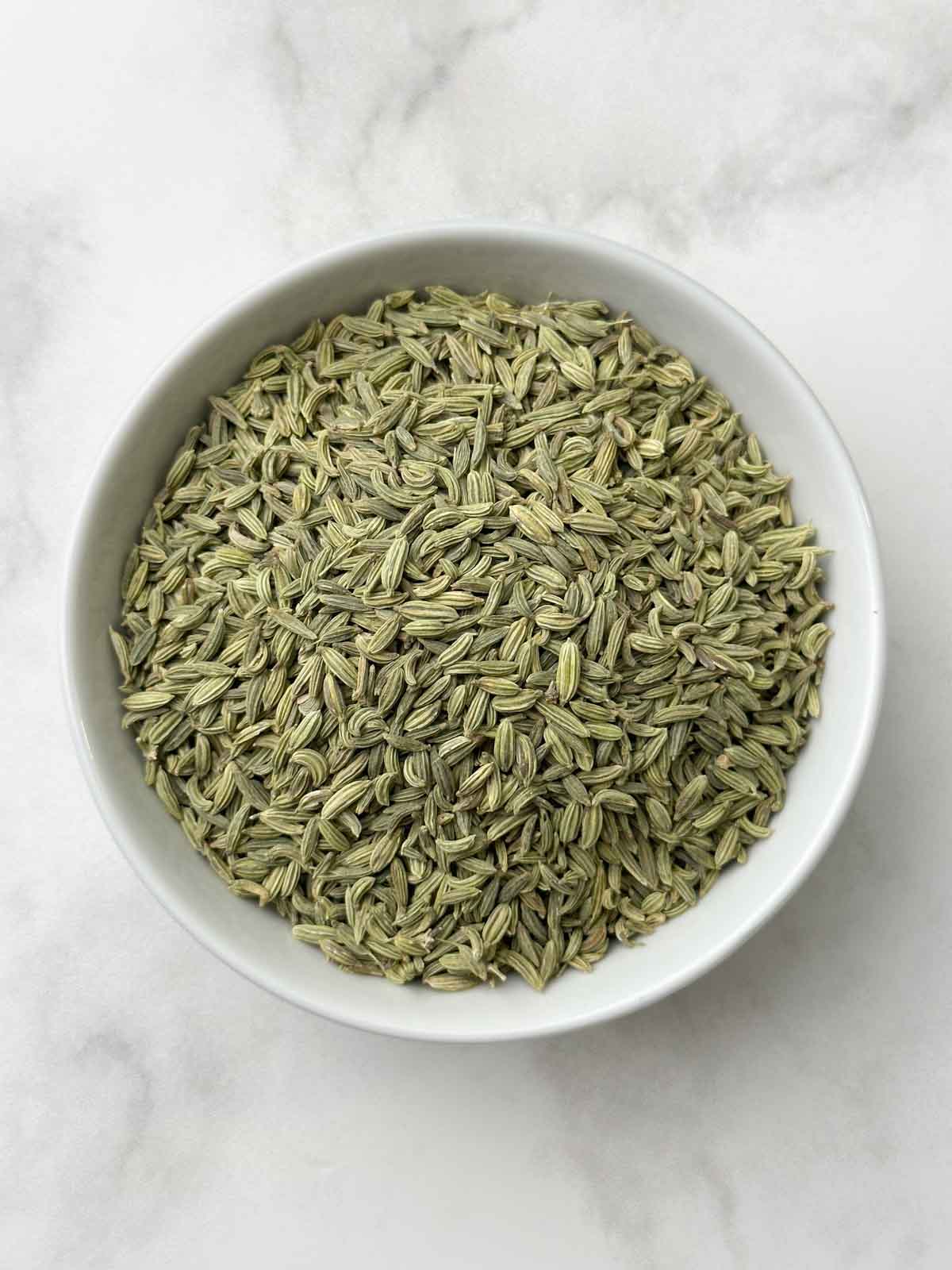
Shahi Jeera (Black Cumin Seeds)
Also referred to as "black cumin" or "caraway seed," Shahi jeera is a black-colored seed. It comes from the 'Carum carvi' plant. It is mostly used in Indian curries and tandoori meals.
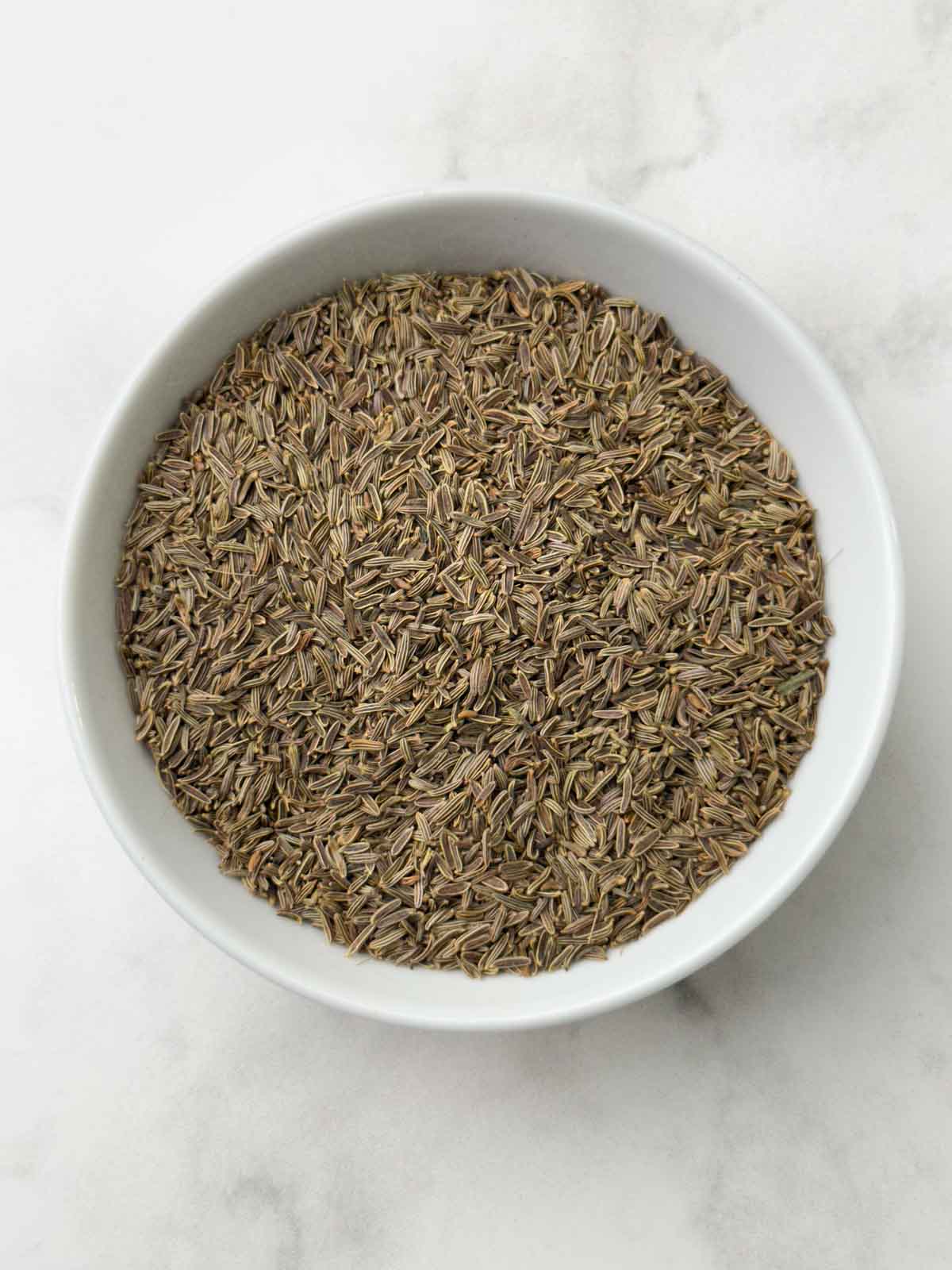
Nigella Seeds (Kalonji)
Nigella seeds, commonly referred to as black cumin or kalonji, give a variety of culinary creations a distinctive and fragrant touch. Nigella seeds are tiny black seeds that are obtained from the Nigella sativa plant. They are often referred to as kalonji or black cumin seeds.
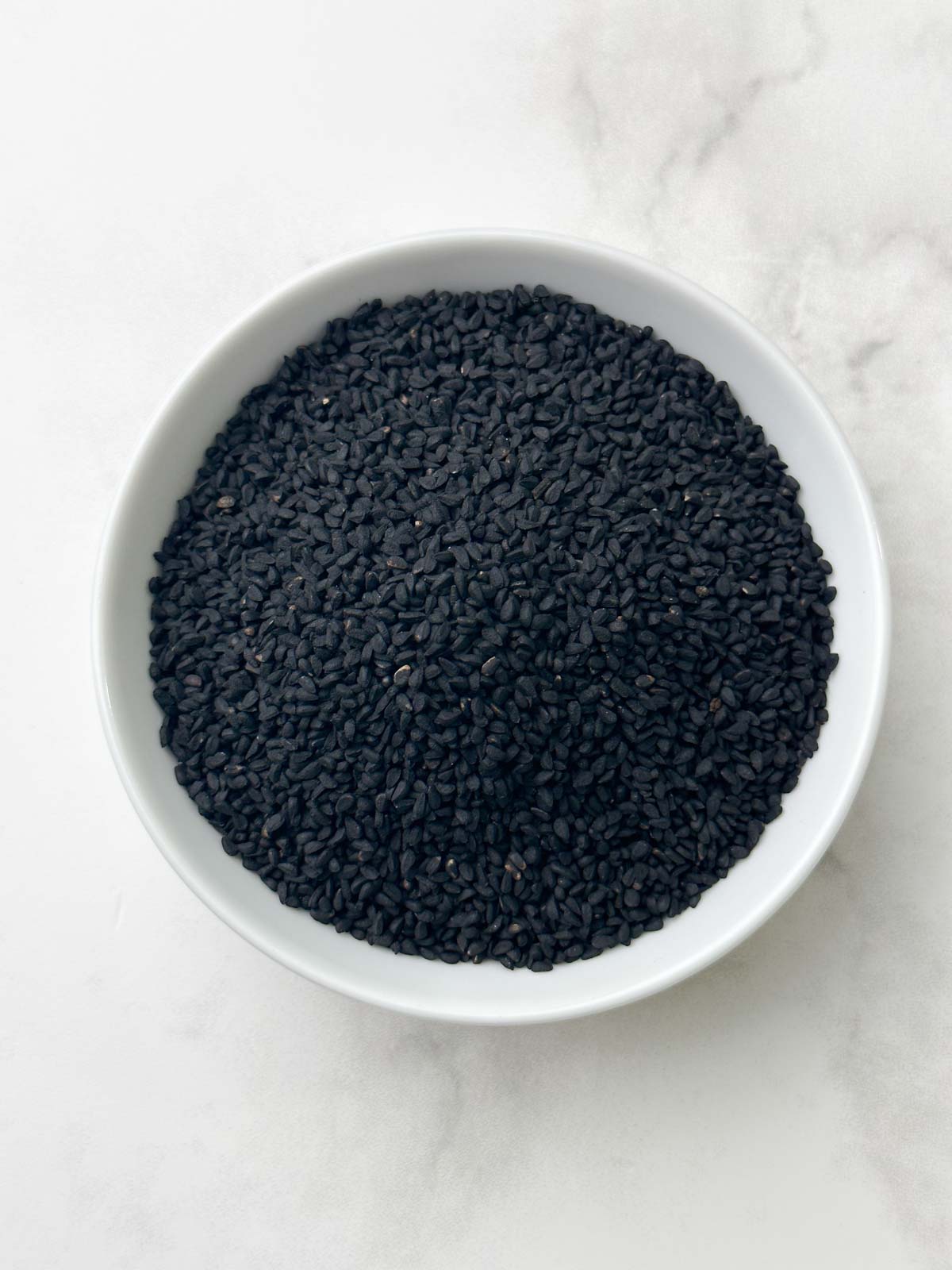
Saffron
A highly valued spice, saffron is admired for both its distinct flavor and vivid color. It comes from the Crocus sativus plant's blossom. It tastes lightly like soil with a strong floral scent.
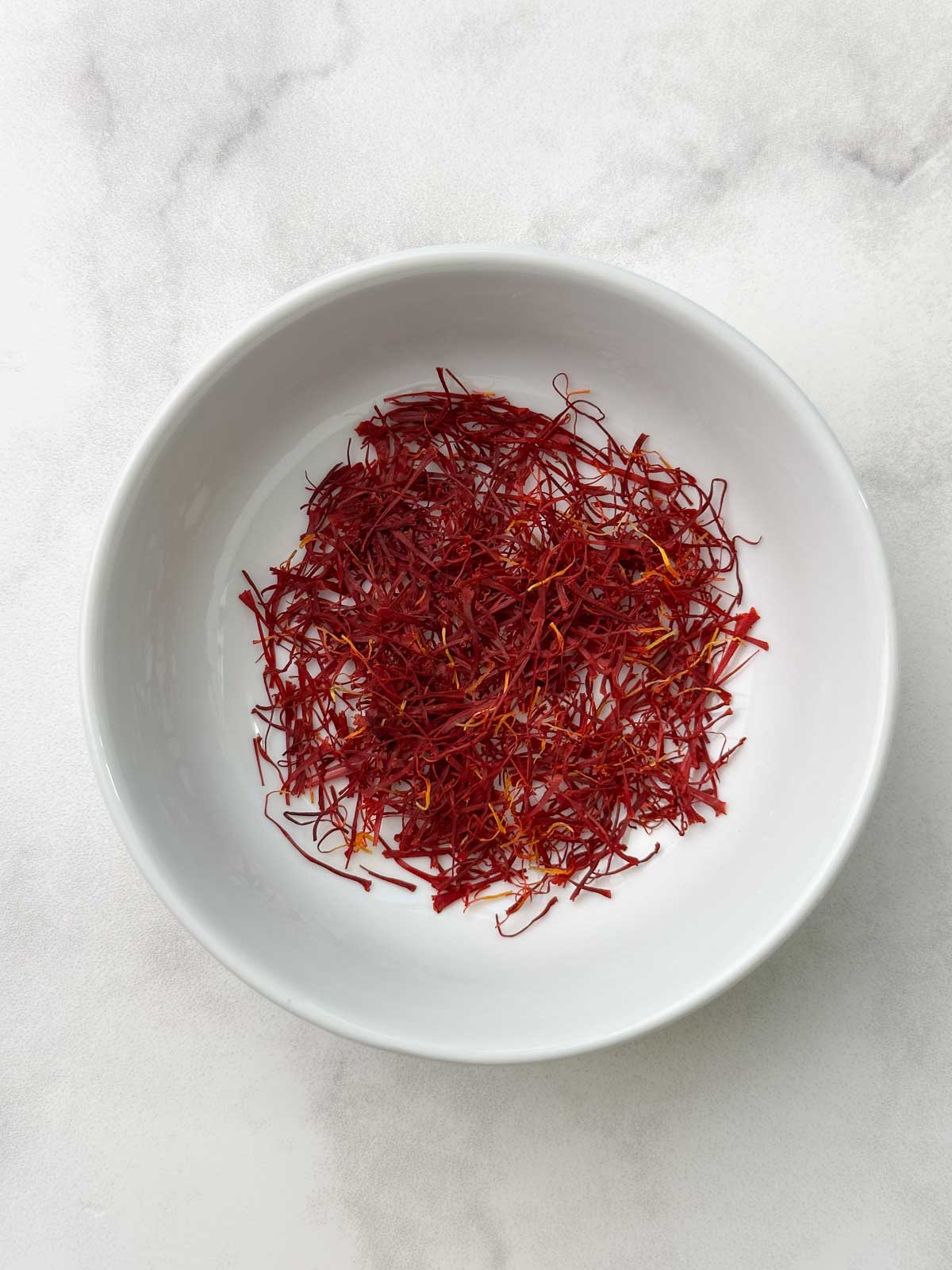
Poppy Seeds
Poppy seeds are tiny, oil-rich seeds that are derived from the opium poppy plant. These seeds have a nutty, aromatic, and slightly sweet flavor.
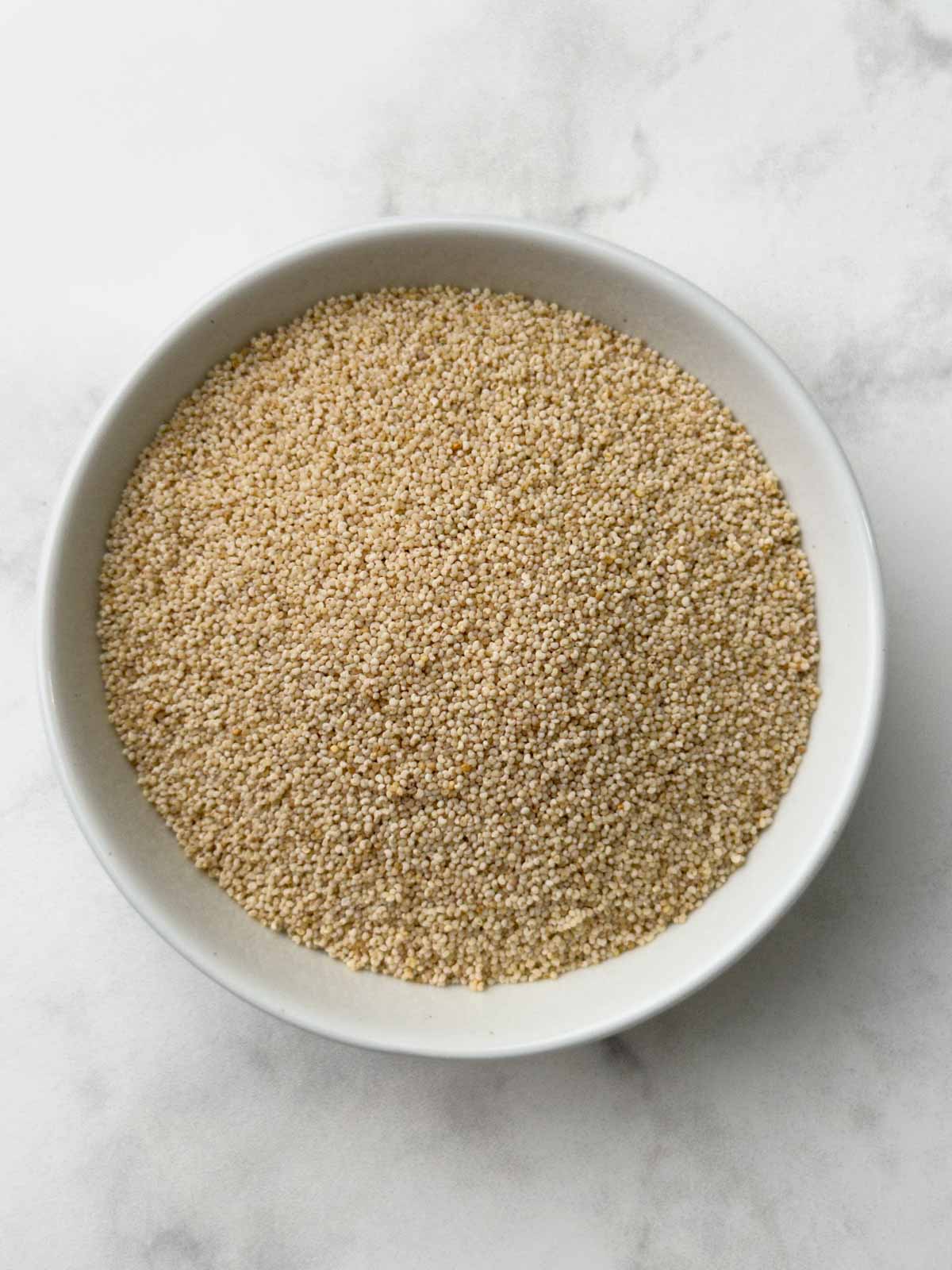
Sesame Seeds
Small and flat, sesame seeds are produced by the sesame plant. Their flavor is slightly sweet and nutty. Sesame seeds are frequently used in Indian cooking as a garnish and to give food more taste and texture. They are frequently toasted and used in breads, salads, and stir-fries.
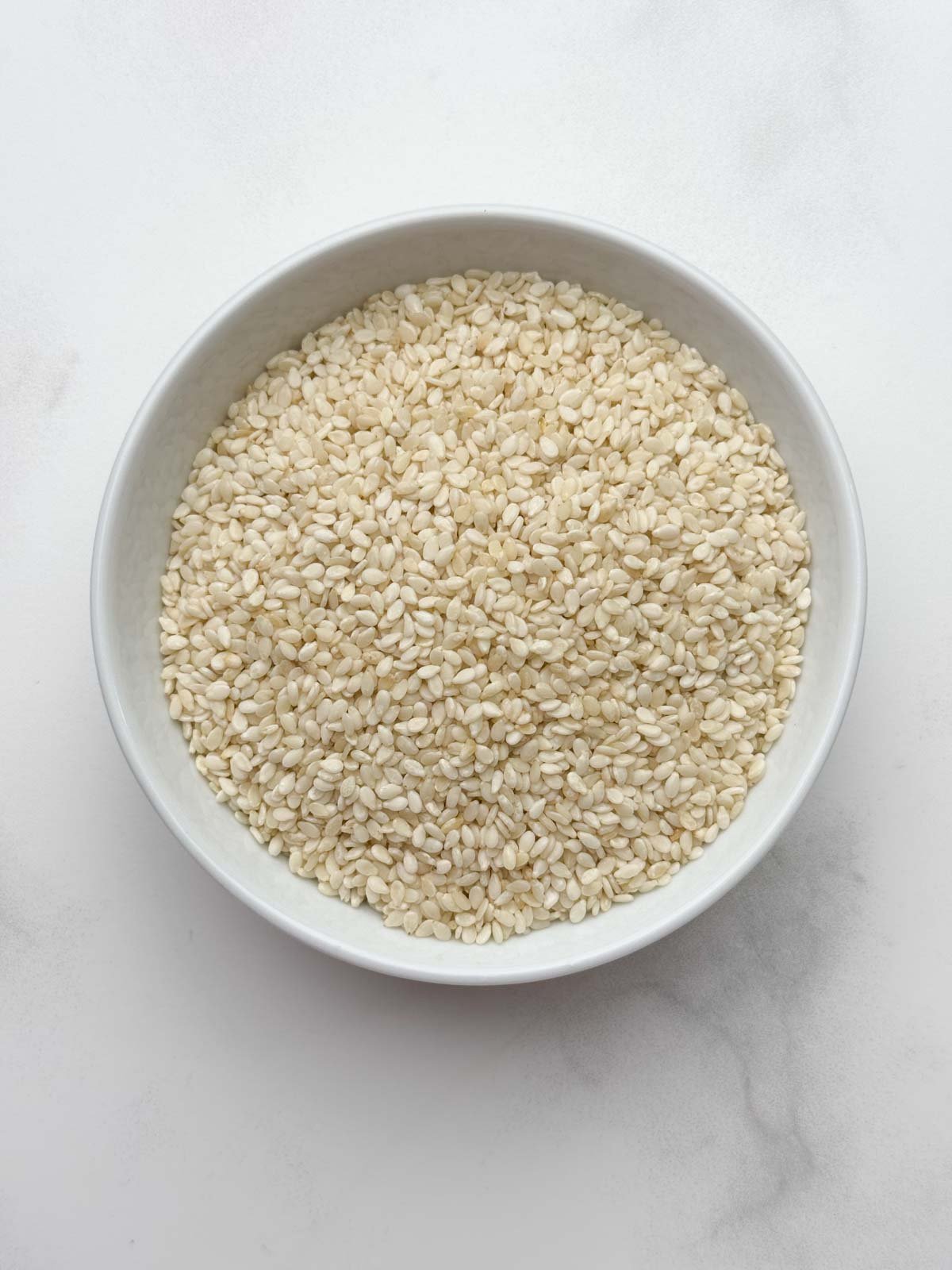
Fenugreek Seeds (Methi Dana)
The flavor of fennel seeds is sweet and slightly licorice-like. They are little, oval-shaped seeds. Their fragrant characteristics are well-known.
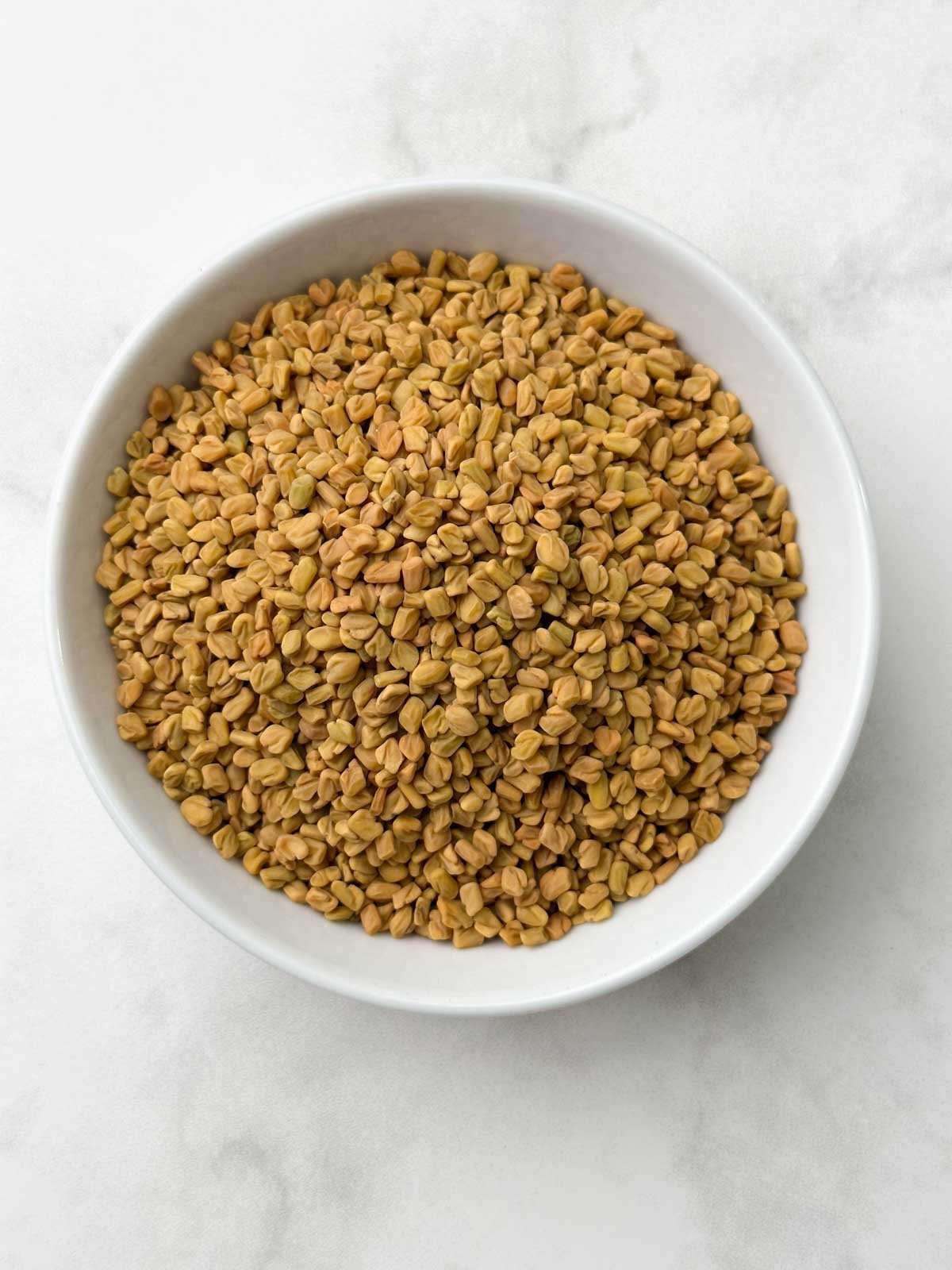
Dried Red Chili
A condiment like dry red chili gives dishes a burst of flavor and color. It possesses certain homeopathic and therapeutic qualities.
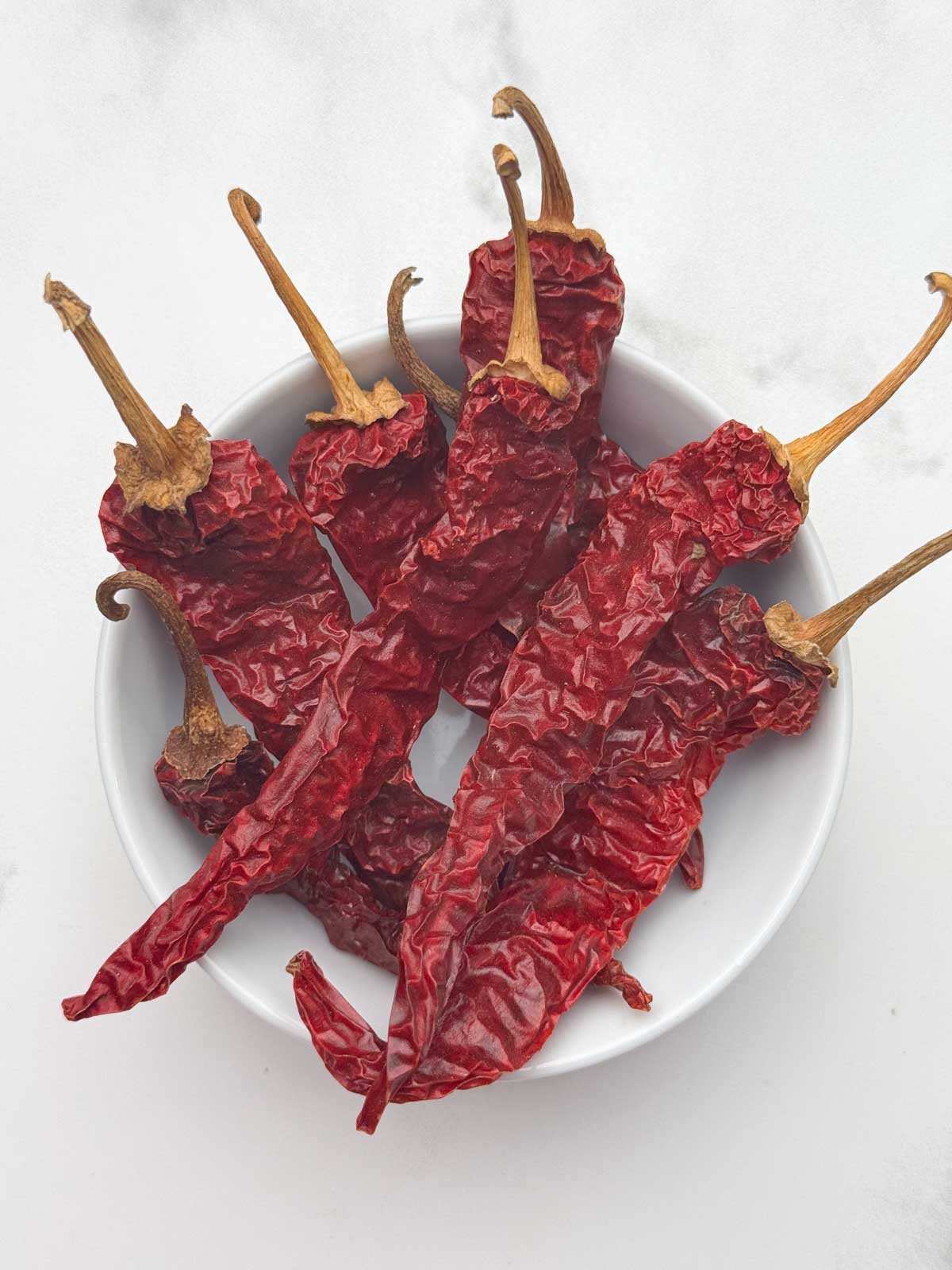
Ground Spices
Whole spices are crushed into a powder known as ground spices. This can be either a single spice, such as turmeric, coriander, cumin, cloves, cinnamon, nutmeg, etc., or a combination of spices mixed to create a complex spice powder, like garam masala. Below are a few of our favorite ground spices used in everyday cooking. Let’s get started with them.
Turmeric
Turmeric is a bright yellow spice commonly used in making Indian food. It adds a warm, earthy flavor and vibrant color to the dishes. It’s also known worldwide for its health-benefiting properties.
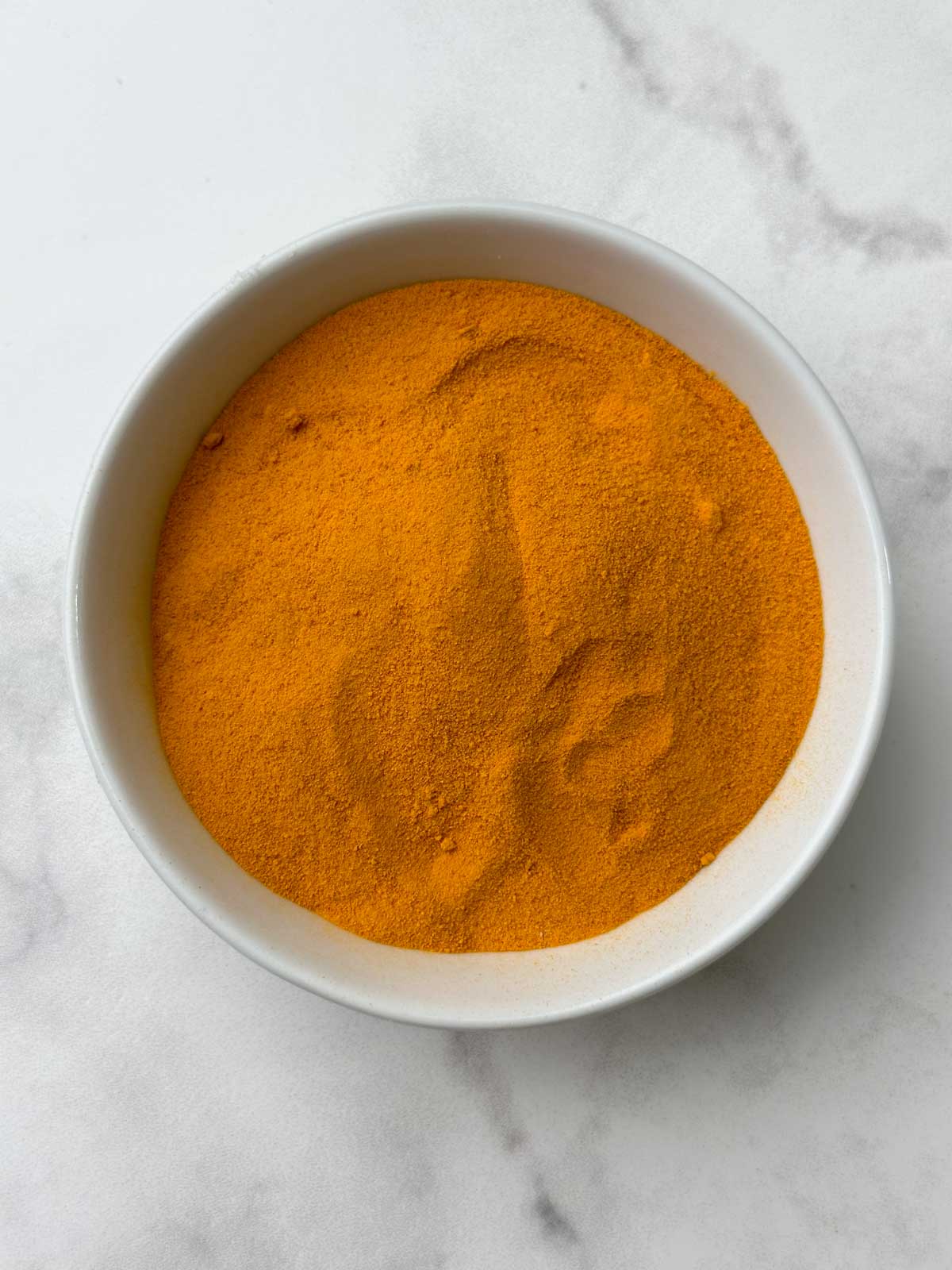
Red Chili Powder
Red Chili Powder is a popular Indian spice used in making Indian cuisine. It is derived from dried and ground red chili peppers, adding a spicy and vibrant flavor to the dishes.
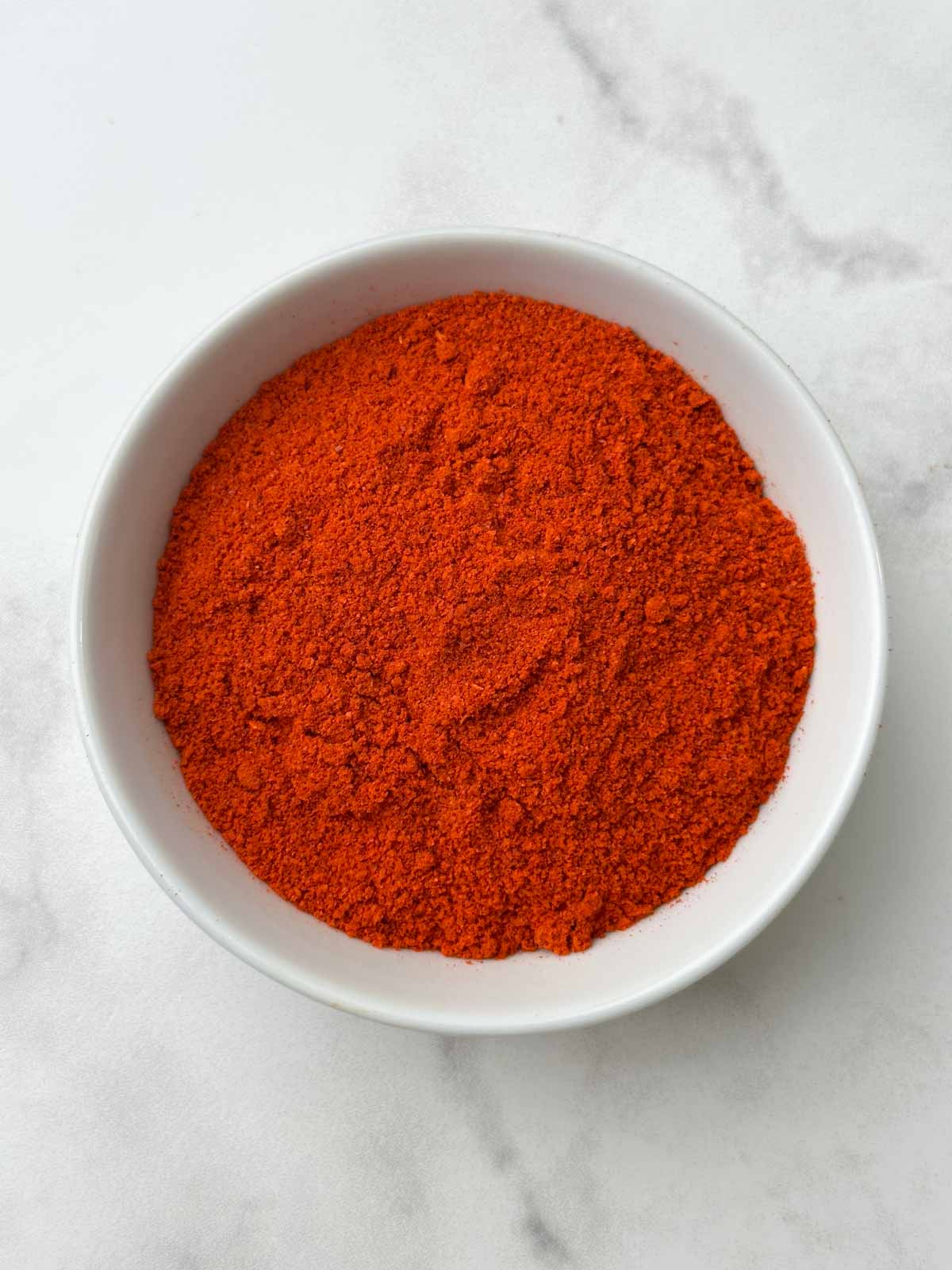
Coriander Powder
Coriander powder is made from the seeds of the coriander plant. It enhances both savory and sweet culinary creations with a subtle fragrance and scent.
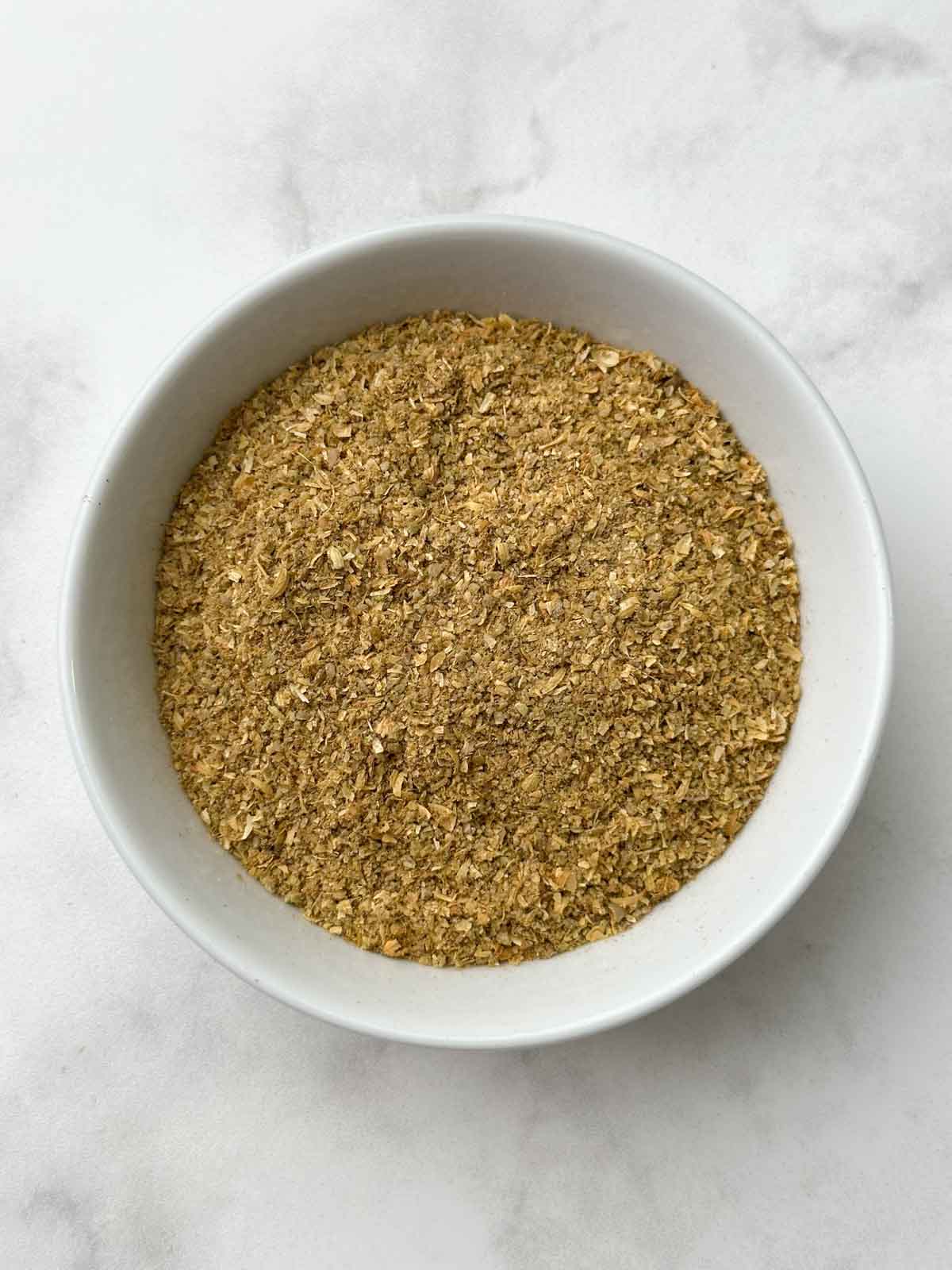
Cumin Powder
The plant known as Cuminum cyminum yields the spice known as cumin. It is indigenous to Europe, Africa, and Asia. Cumin is often purchased as a powdered powder or as entire dried seeds.
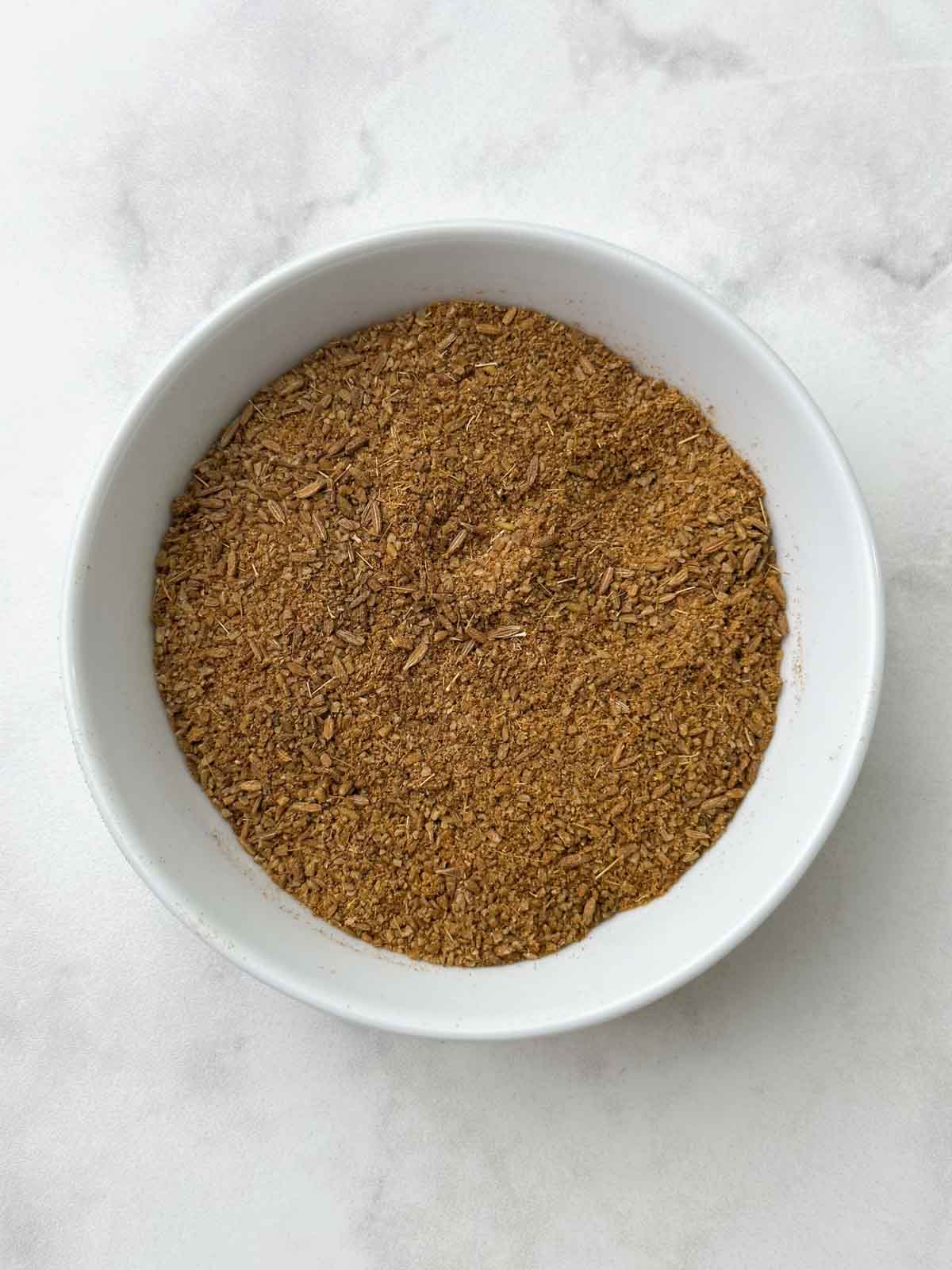
Asafoetida (Hing)
Considered a member of the celery family of herbs, ferula is the source of asafoetida gum resin. Typically, it comes in the form of a gritty yellow powder.
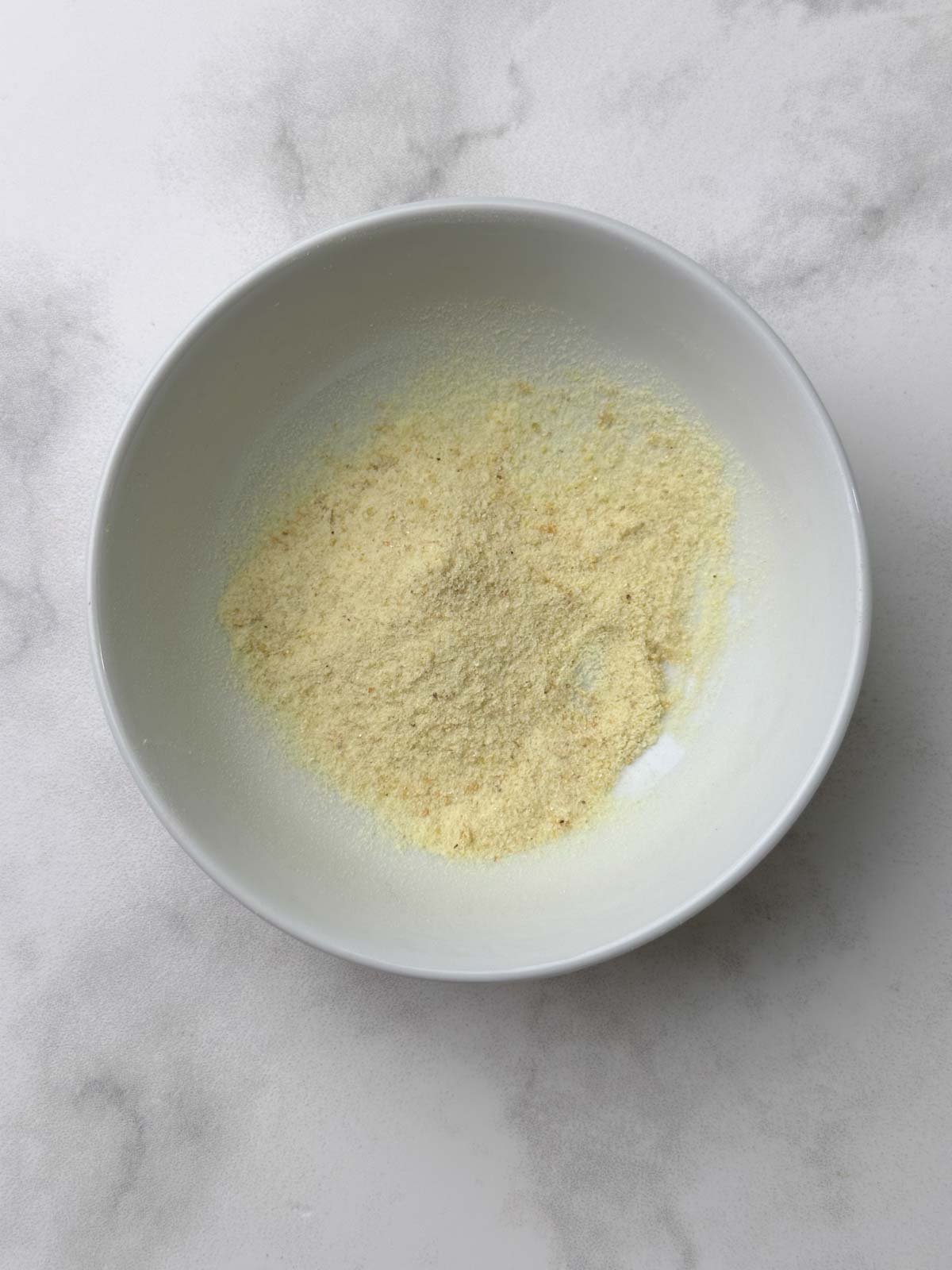
Dry Ginger Powder
Ground and dried ginger root is used to make dry ginger powder. It gives food a zesty, spicy, and toasty flavor. Indian curries, drinks, and even sweets are made using it.
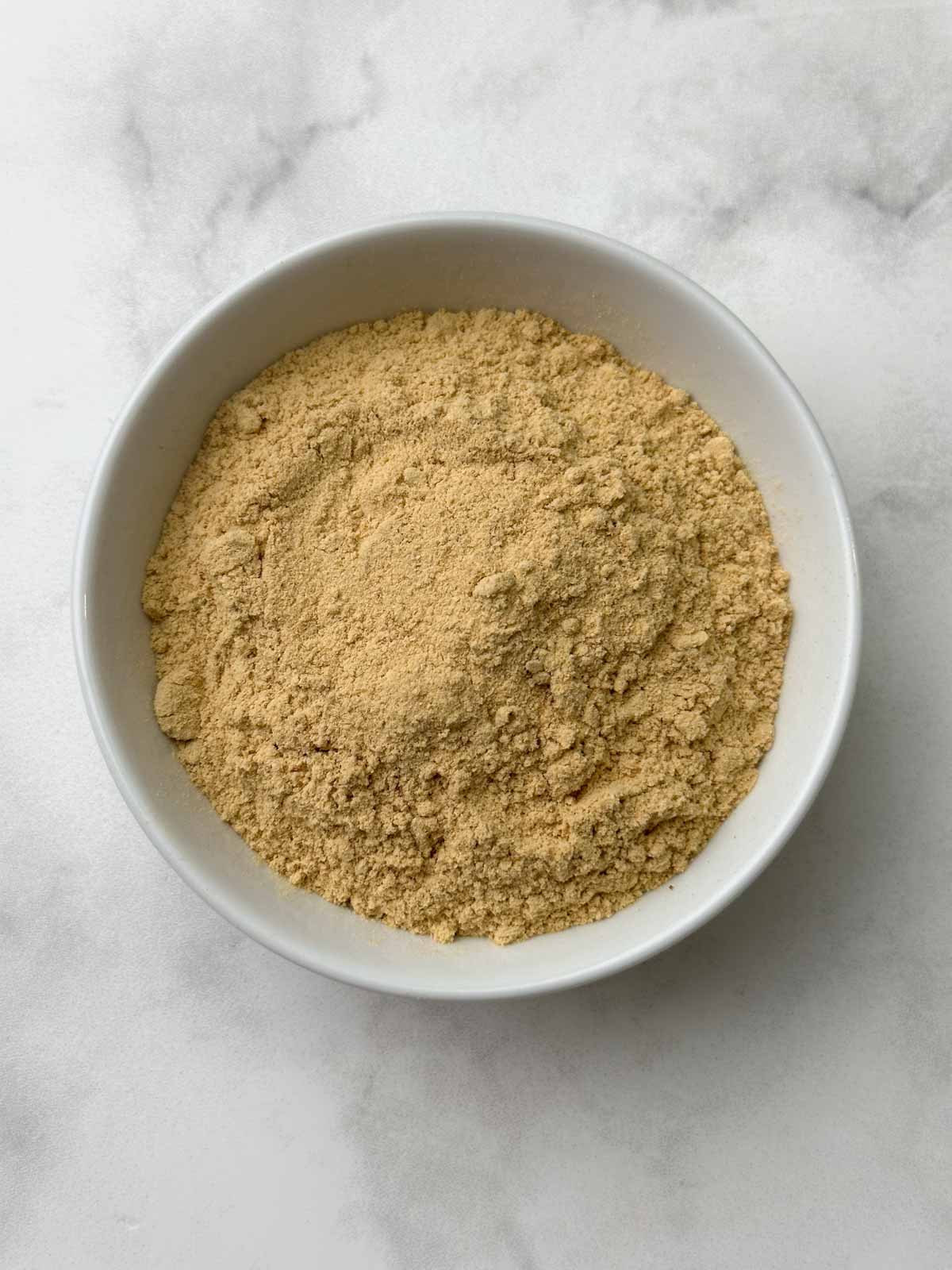
Raw Mango Powder
Dried and powdered unripe mangoes are used to make raw mango powder. Its flavor is tangy and somewhat sour, giving chutneys, curries, chaats, and other meals a distinctive taste.
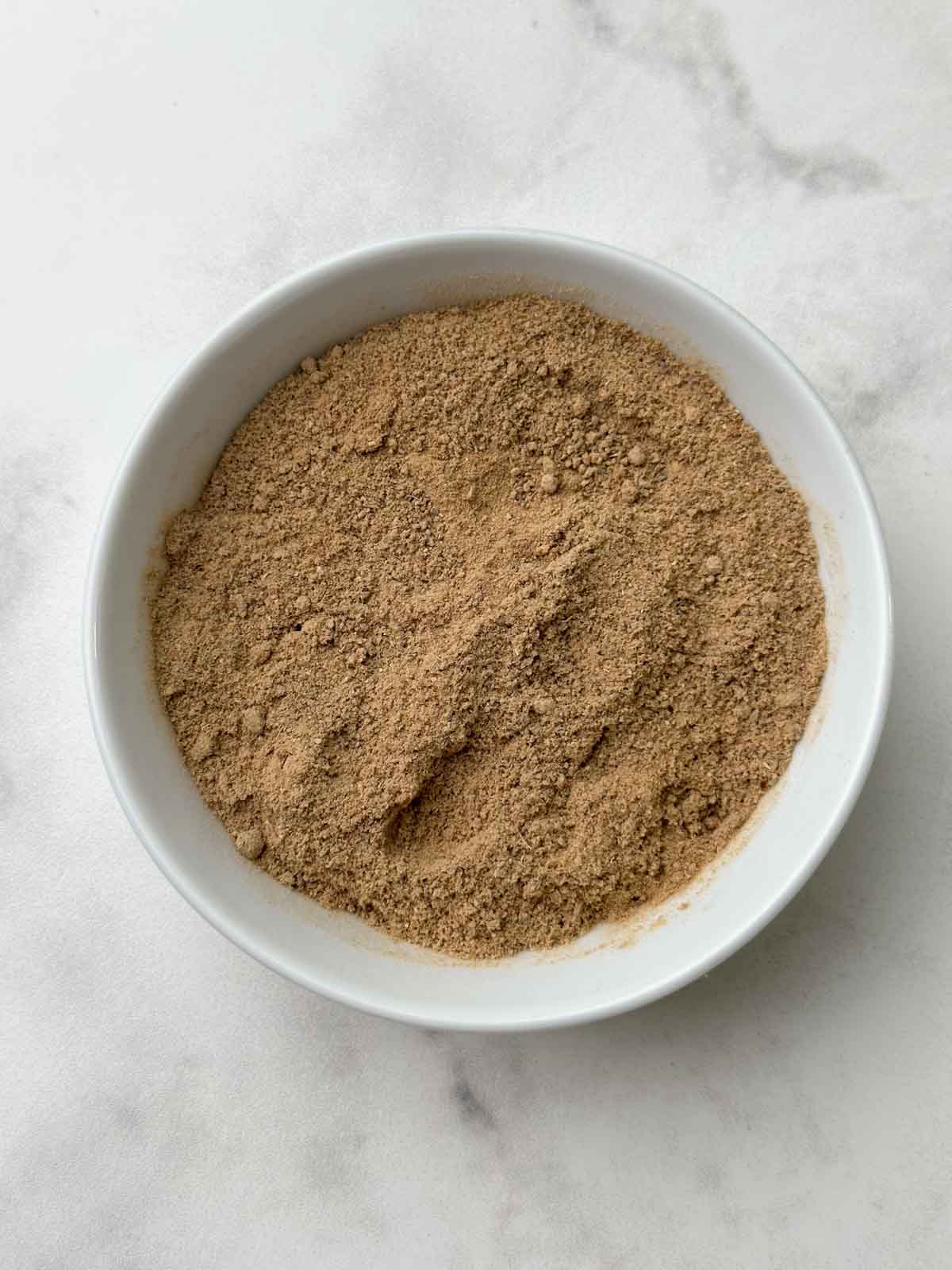
Garam Masala
A mixture of many Indian spices, garam masala is frequently used in Indian cooking. Cloves, cinnamon, cumin, cardamom, coriander powder, and black peppercorns are frequently used.
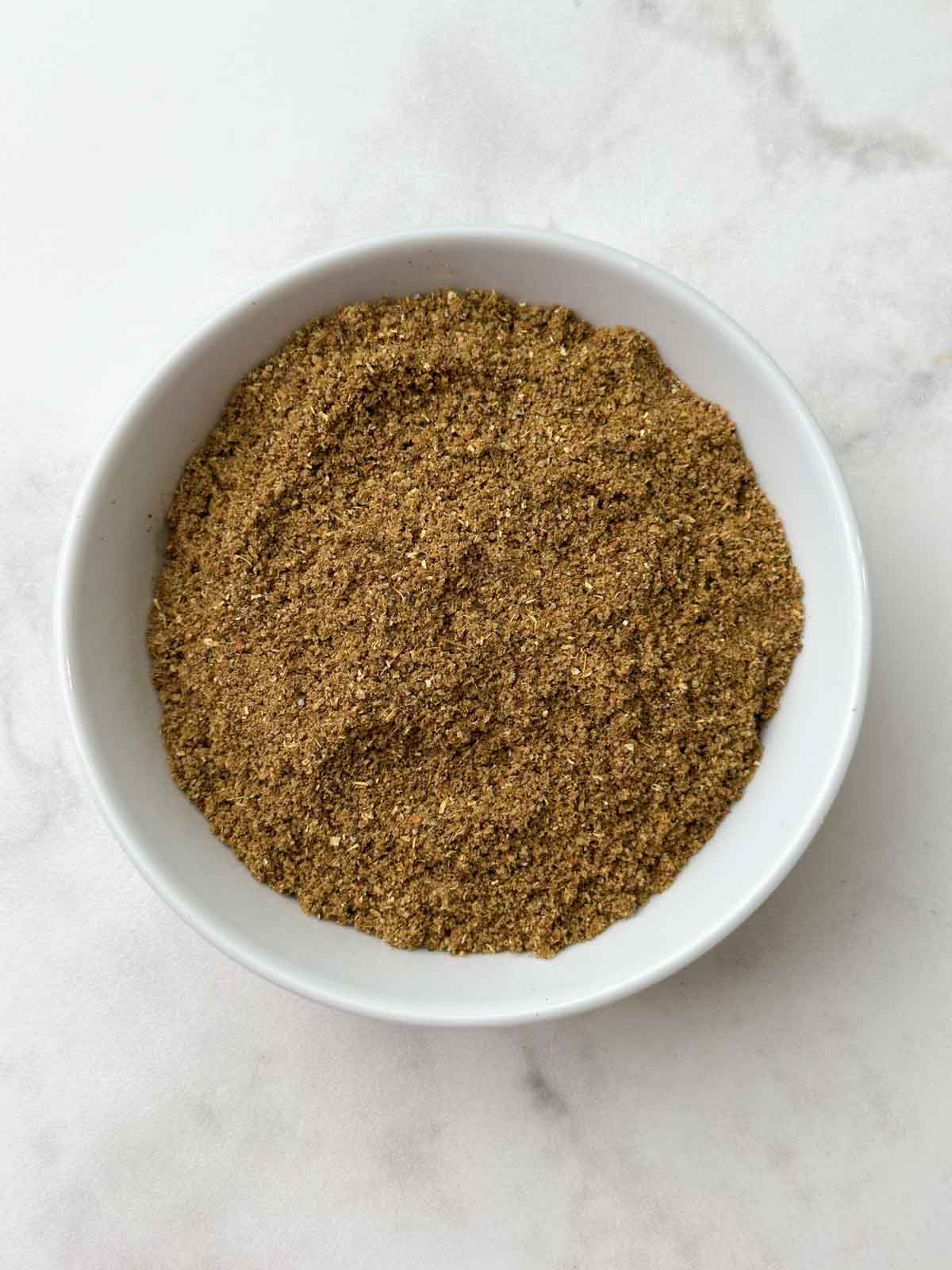
Black Salt (Kala Namak)
Indian cooking frequently uses black salt, a kind of rock salt. It tastes different because of its peculiar sulfurous flavor. It is mainly used in making chaats, curries, salads, and other delicious delicacies.
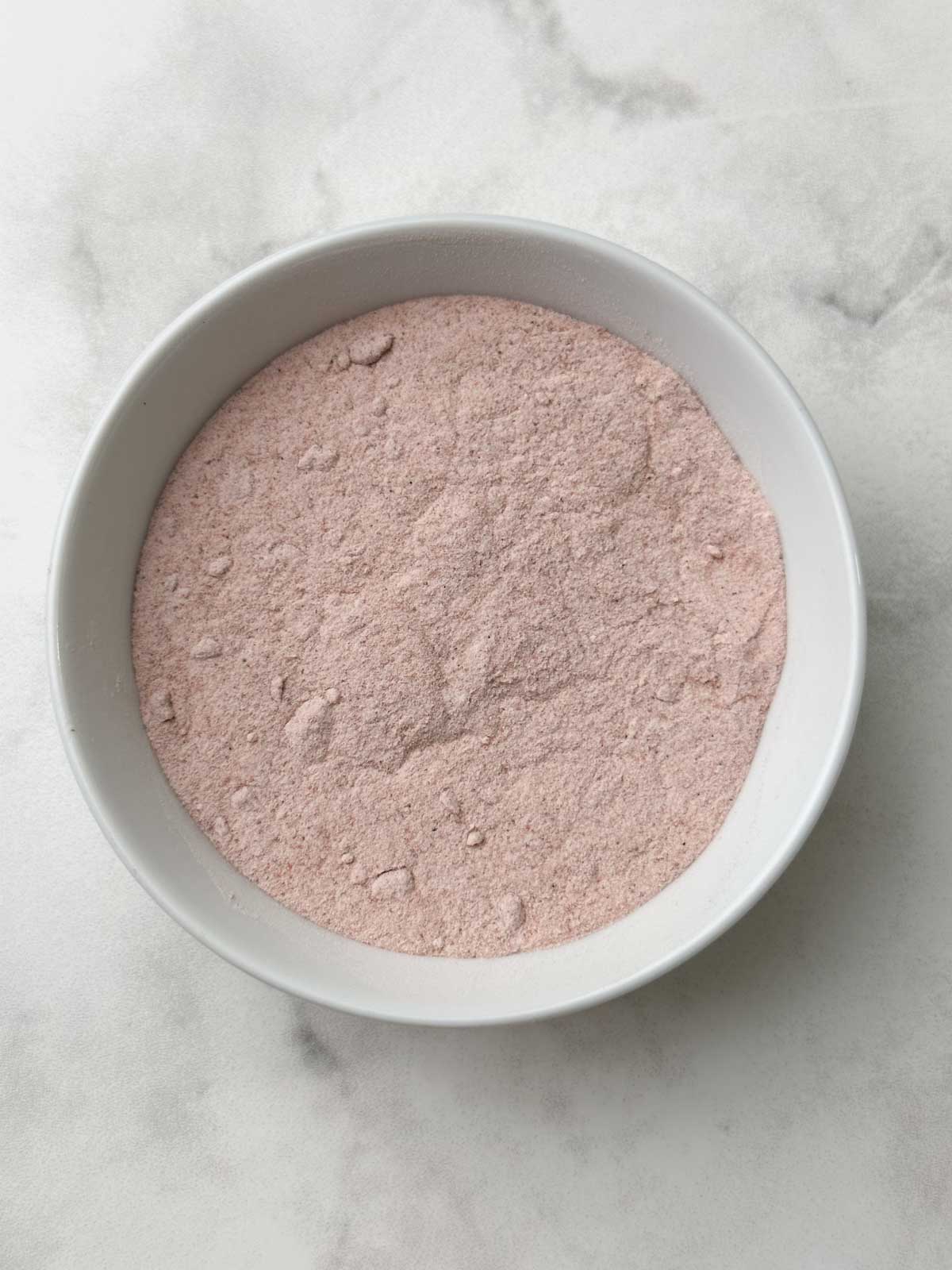
Indian Herbs
Indian herbs are essential for cooking since they provide distinct tastes, scents, and health advantages. Indian food is incredibly flavorful and unique because of its depth and complexity on the palate.
Every herb has a unique flavor that gives cuisine more depth and richness. Not only are these herbs delightful, but many of them also have therapeutic qualities, which makes them healthy for you!
Coriander leaves
The green, leafy sections of the coriander plant are called cilantro, or coriander leaves. They taste fresh and zesty, and they are frequently used in Indian, Mexican, and Thai cooking as a garnish or component. To recipes such as salads, chutneys, salsas, and curries, coriander leaves lend a bright, aromatic touch. They are unquestionably indispensable in the kitchen!
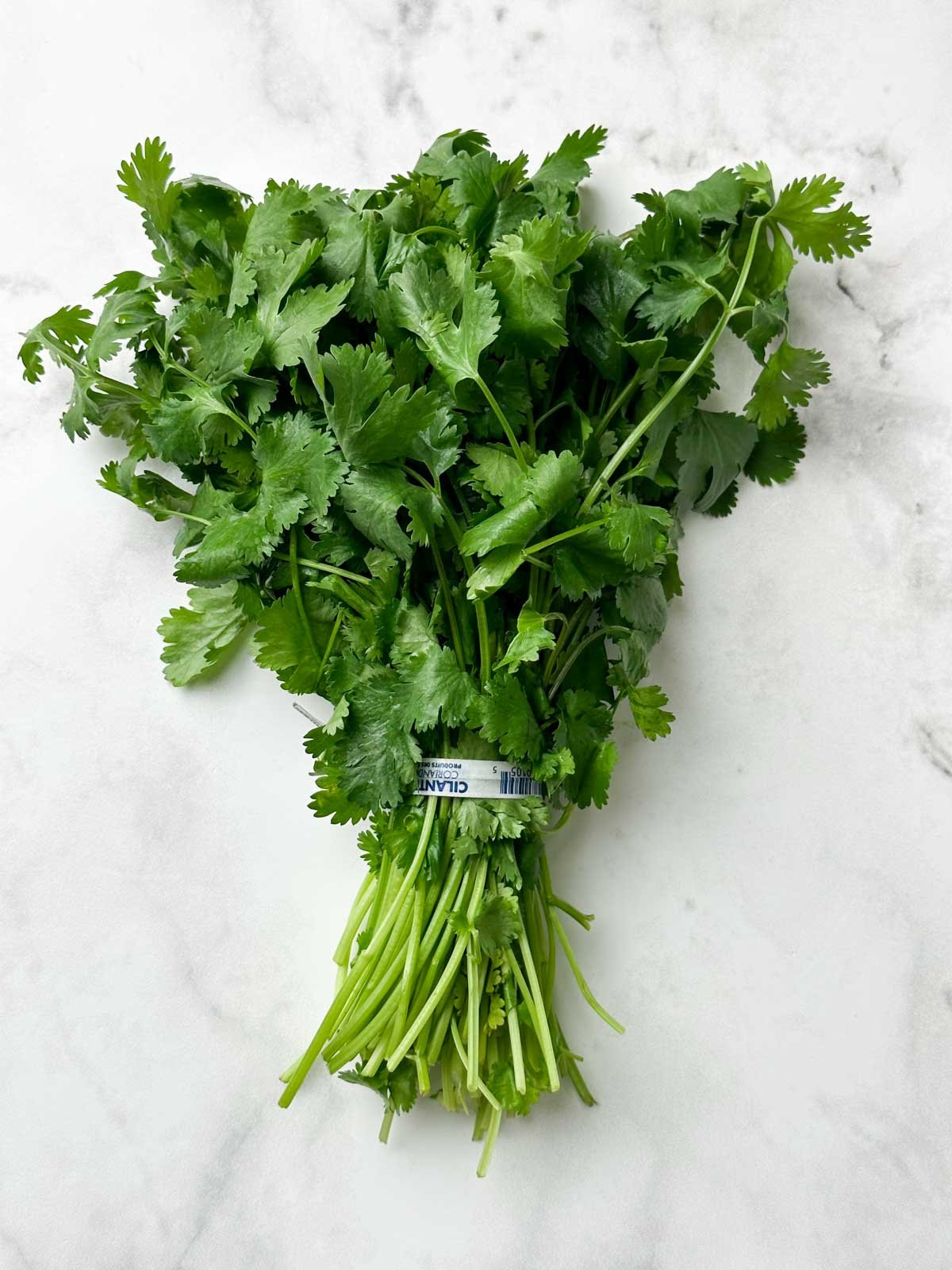
Curry Leaves
Curry leaves are fragrant leaves that are frequently used in Indian cooking. Their peculiar flavor gives meals a distinctive flavor. They are frequently used in rice dishes, chutneys, soups, and curries.
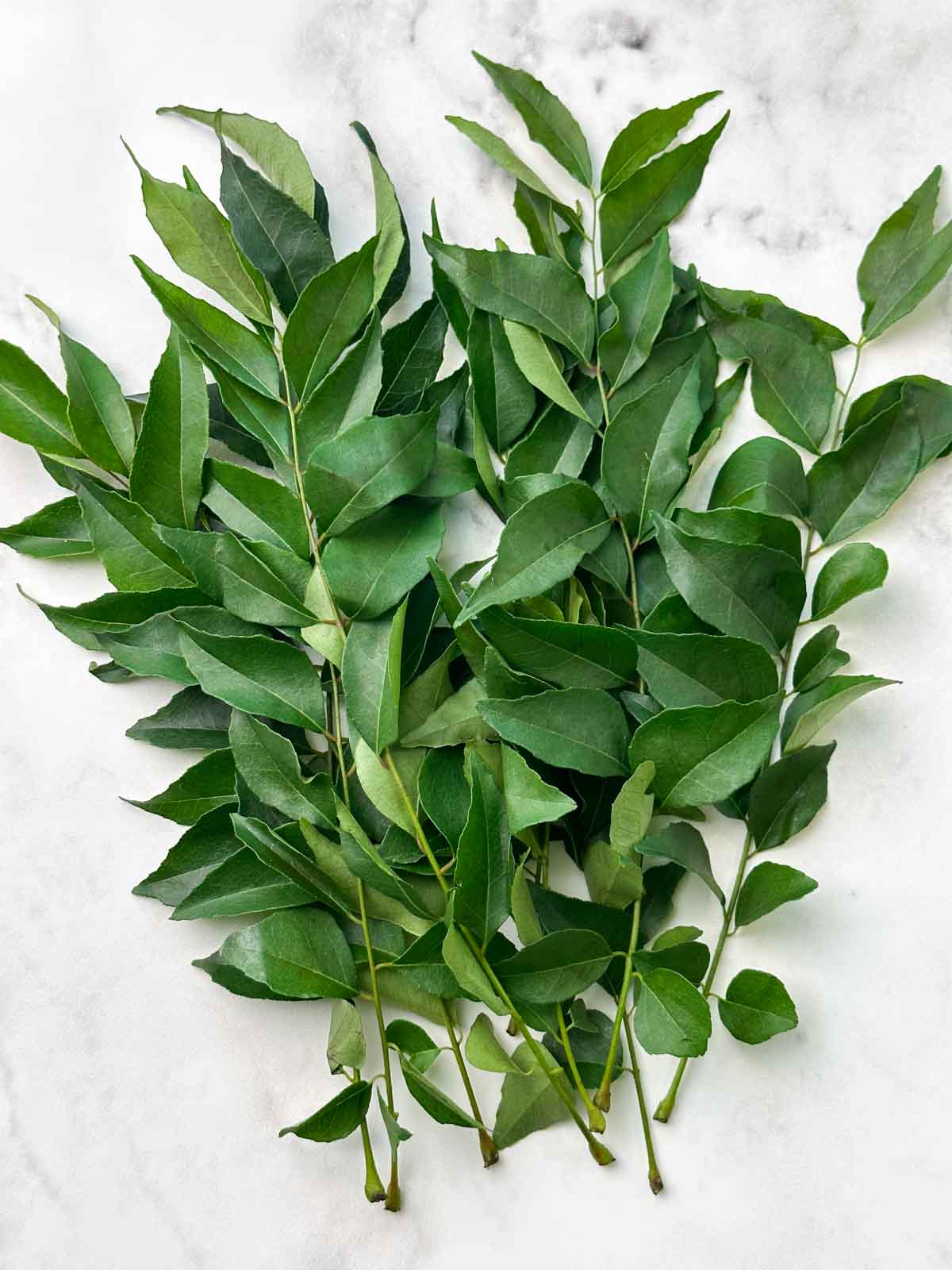
Mint Leaves
Mint Leaves are sweet and have a refreshing and cooling quality. They add a zesty touch to the biryani, Pulao, chutney, raita, and even beverages.
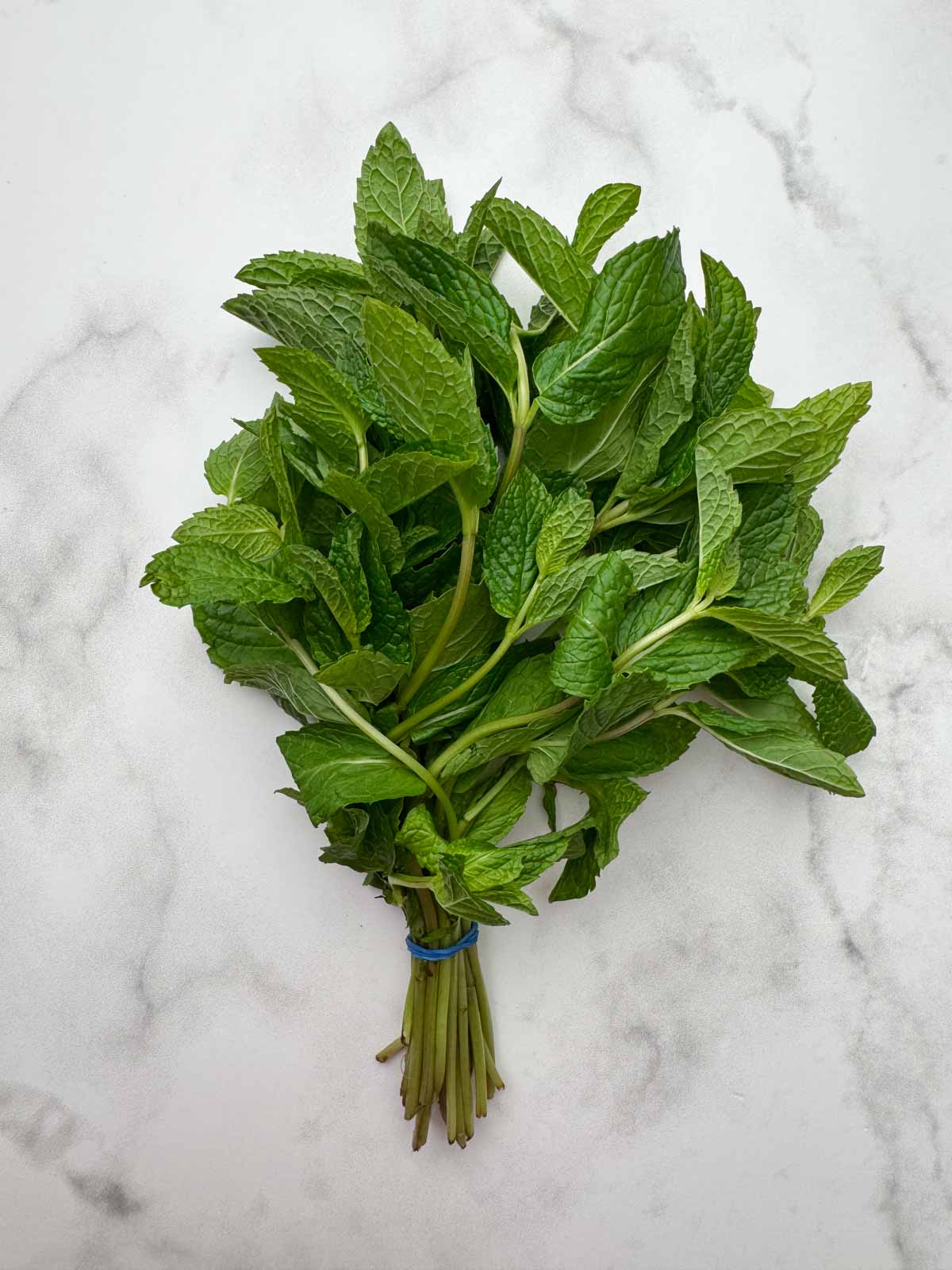
Dill
Dill is a herb with fluffy green leaves and a unique flavor. It has a slightly sweet and tangy flavor, with notes of anise and citrus. It's a multipurpose herb that lends a unique flavor to meals!
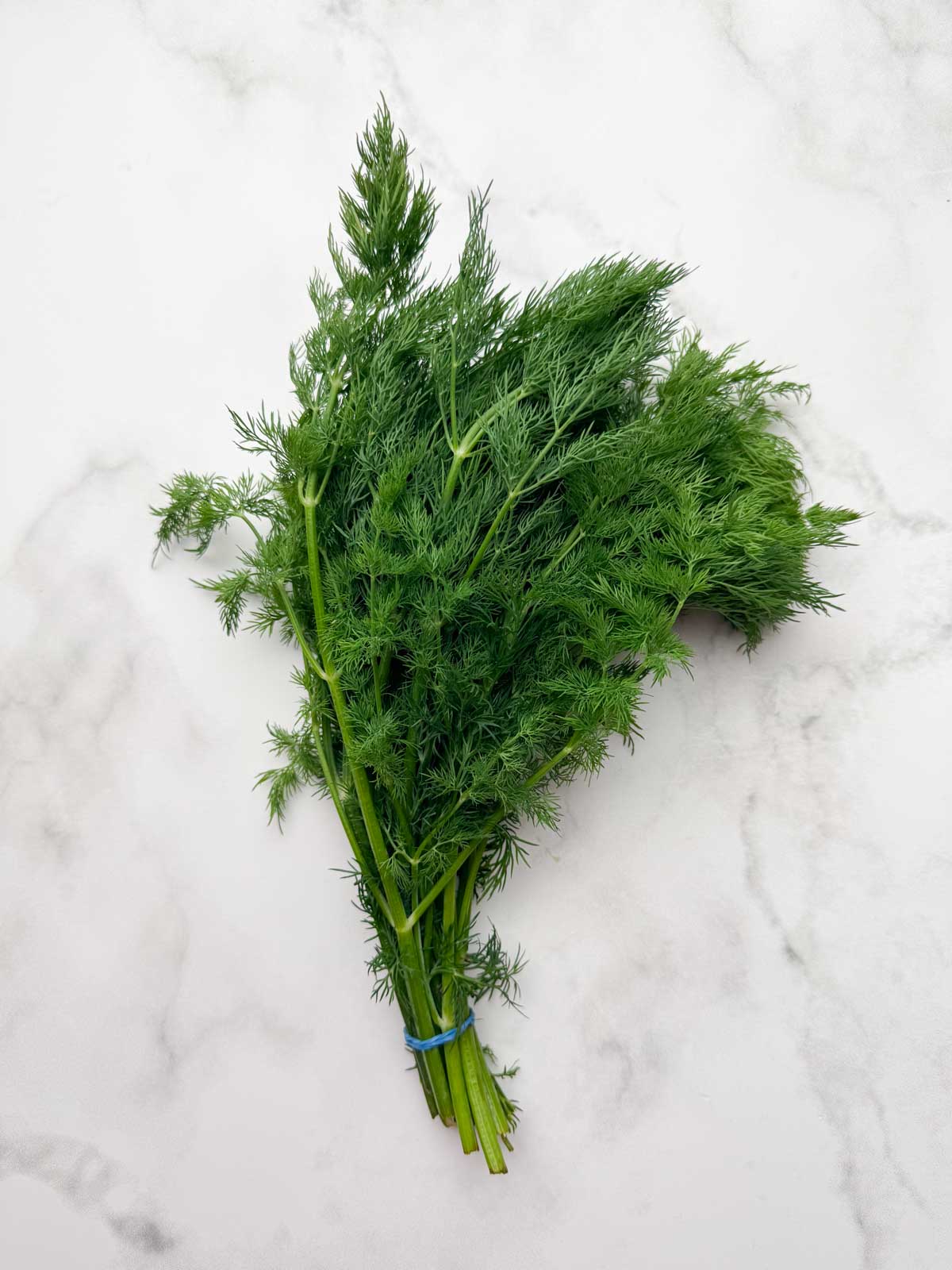
Indian Holy Basil
Basil, also known as tulsi, is a sacred herb in Hinduism and holds great importance in Indian culture. It has a powerful fragrance and a slightly spicy flavor. Holy basil can be used fresh, dried, or as a herbal tea. It is thought to have therapeutic characteristics and is widely utilized in Ayurvedic medicine due to its possible health advantages. Holy basil is widely used in the kitchen, especially in Indian curries, chutneys, and herbal treatments.
Kasoori Methi
Dried fenugreek leaves with a distinct scent and a strong, slightly bitter flavor are known as kasoori methi. These leaves are frequently added as a flavoring to curries, salads, and naan breads. It gives the food a distinct and flavorful flavor.
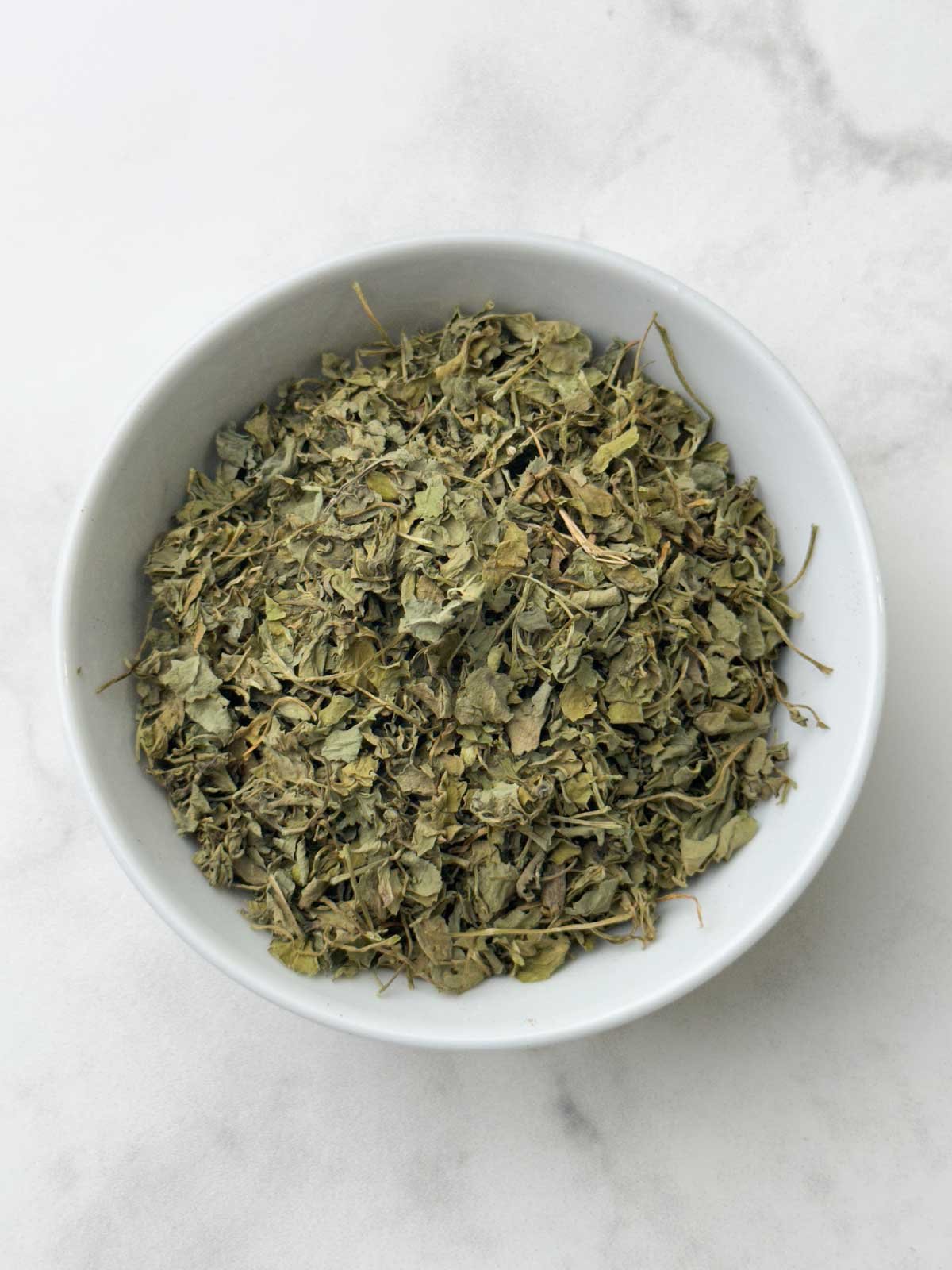
FAQS
You can easily buy Indian spices from your nearest grocery store. You can even order them online.
To extend the shelf life of spices, store them in a cool, dark place away from heat sources like direct sunlight. Spices are most frequently kept in cabinets or cupboards, pantries, drawers, hanging on doors or walls, and counters.
Spices and herbs that are dried don't actually "go bad" or expire in the conventional sense. The term "bad spice" refers to a spice that has mostly lost its color, flavor, and effectiveness.
Yes, It's okay to use ground spices in a recipe instead of whole ones. But remember that the flavor of ground spices is more concentrated, so you might need to change the amount. For instance, you can substitute ½ to ¾ teaspoon of ground cumin for the 1 teaspoon of whole cumin seeds called for in a recipe.
More Recipe Collections
- 15+ Indian Salad Recipes
- 30+ Instant Pot Indian Rice Recipes
- 20+ Indian Air Fryer Recipes
- 25+ Instant Pot Indian Curry Recipes
- 10+ Best Veg Sandwich Recipes Indian Style
- 10+ Paratha Recipes
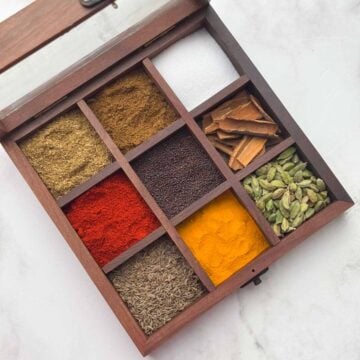
Indian Spices and Herbs
★ Like this recipe? FOLLOW ME on Facebook, Instagram, Pinterest, and Youtube for more quick & easy recipes.

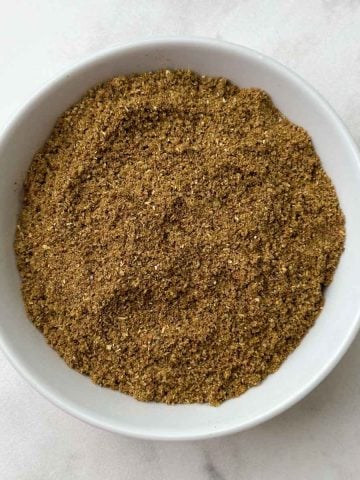
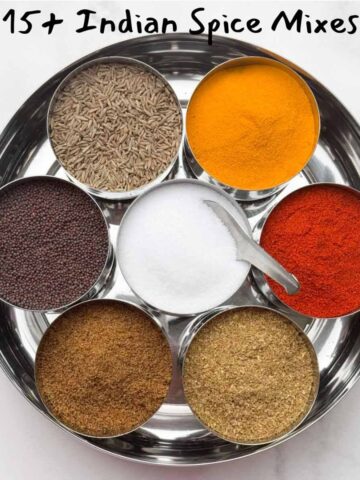
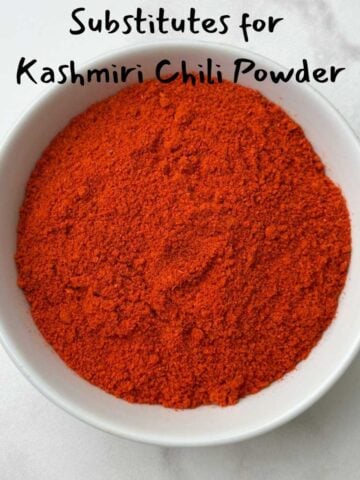
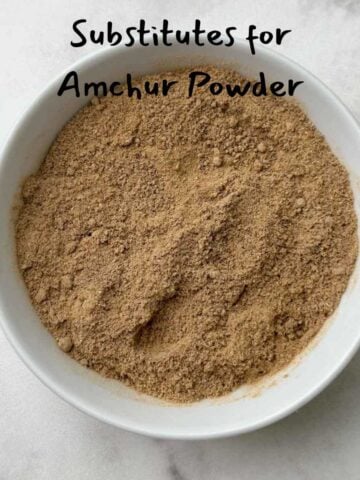
Leave a Reply